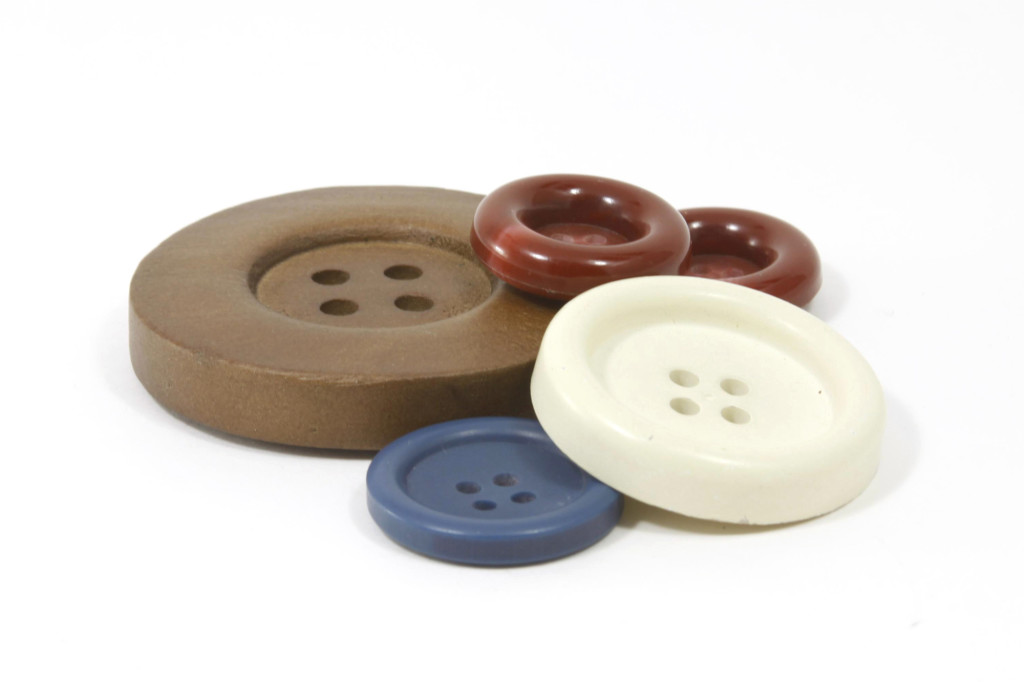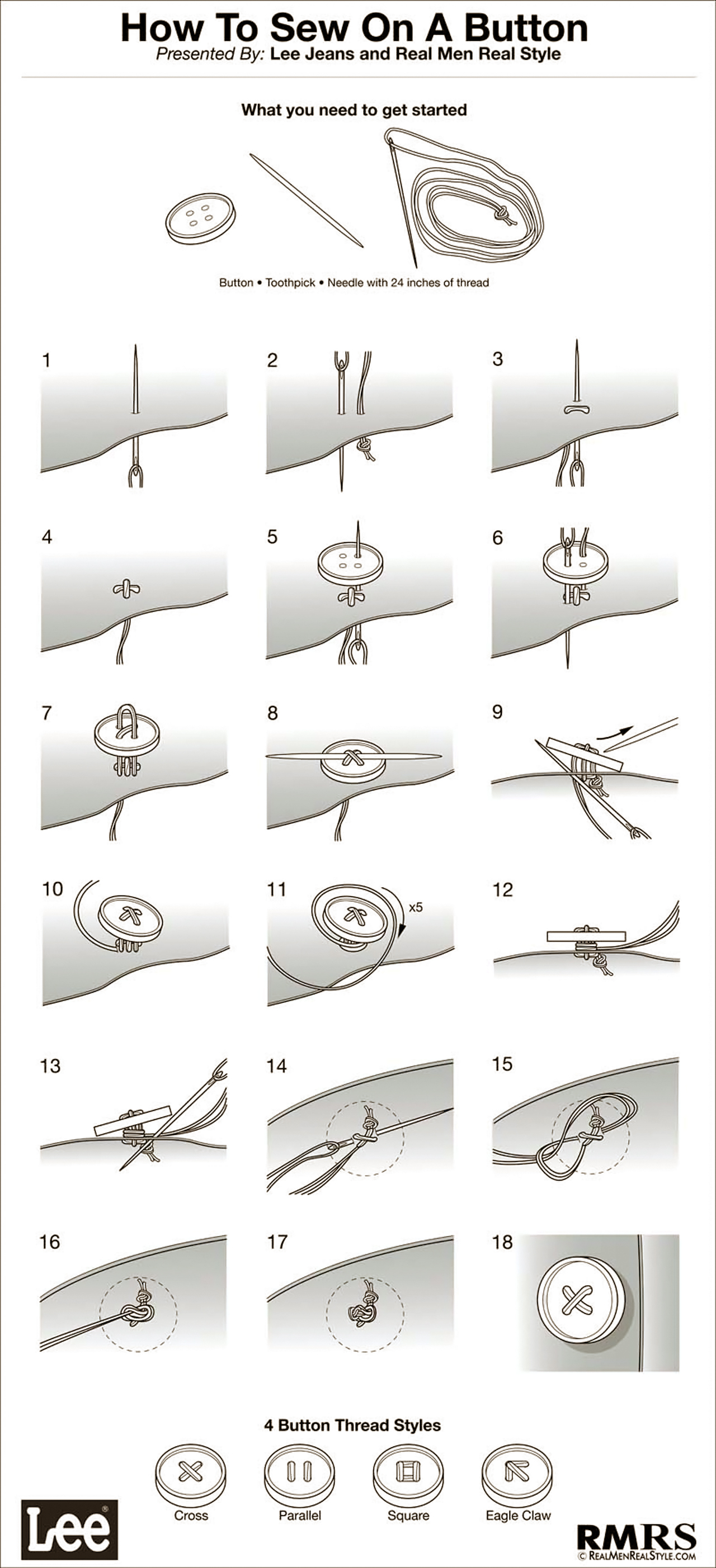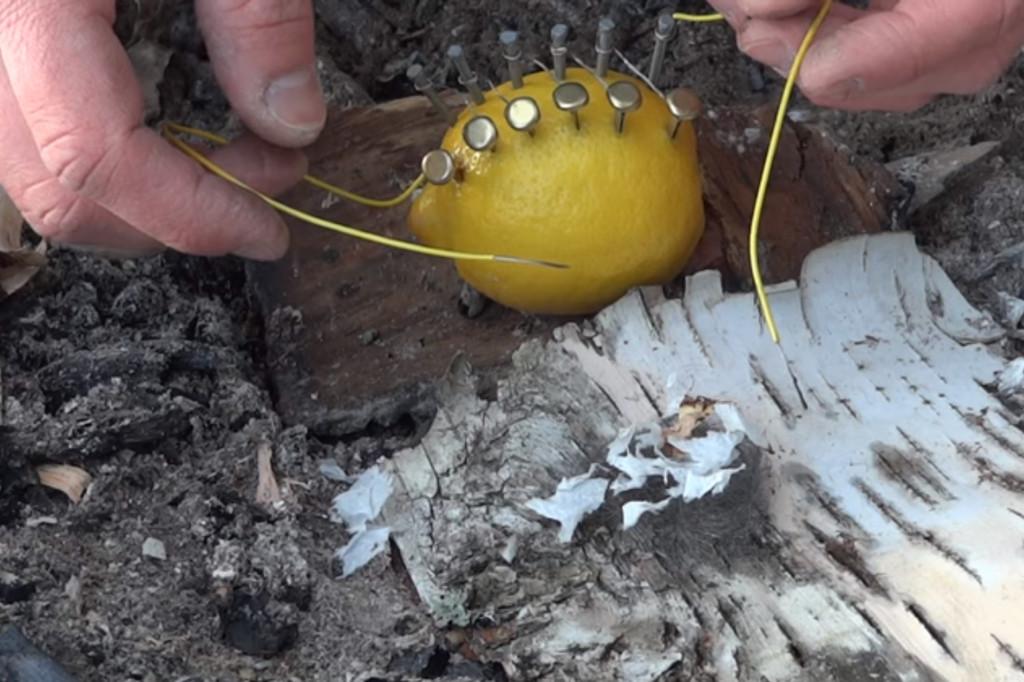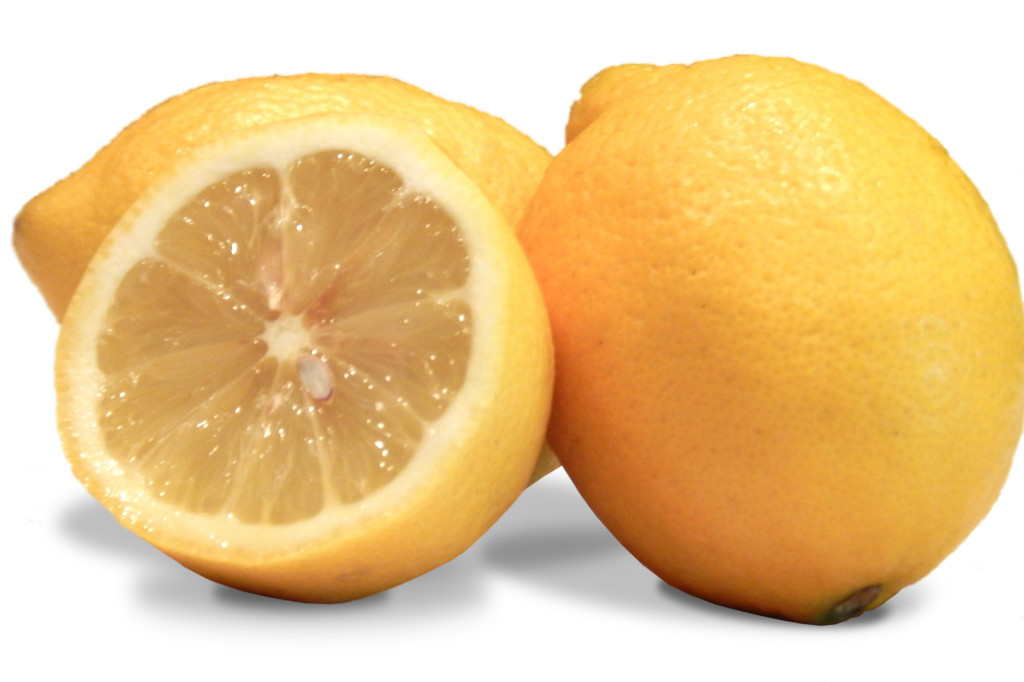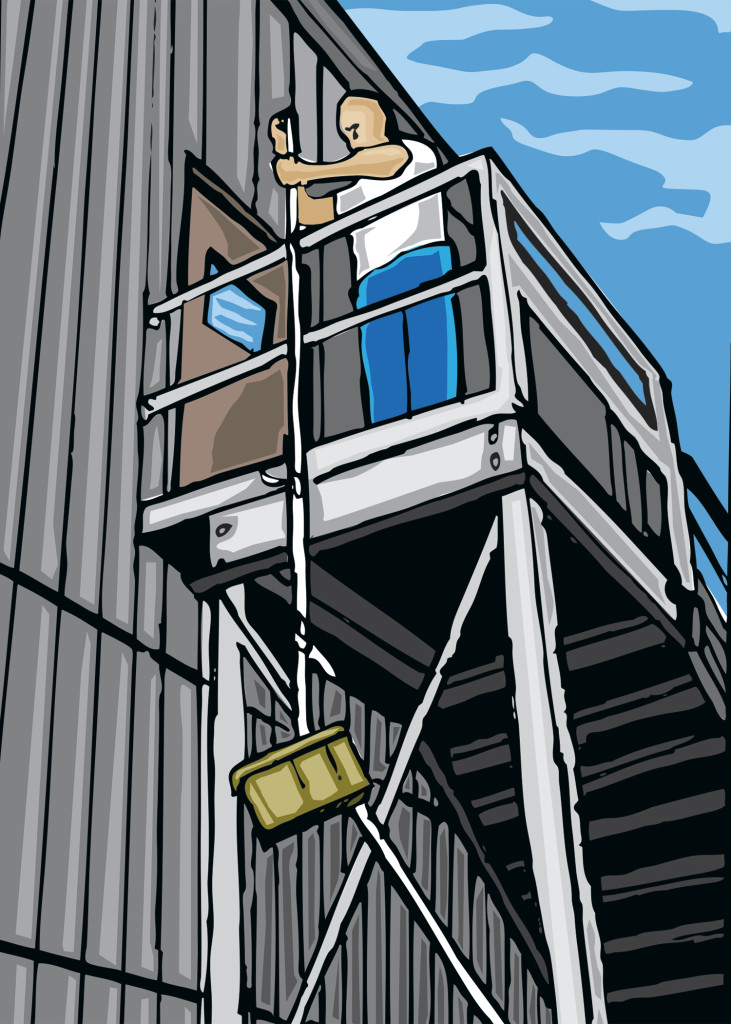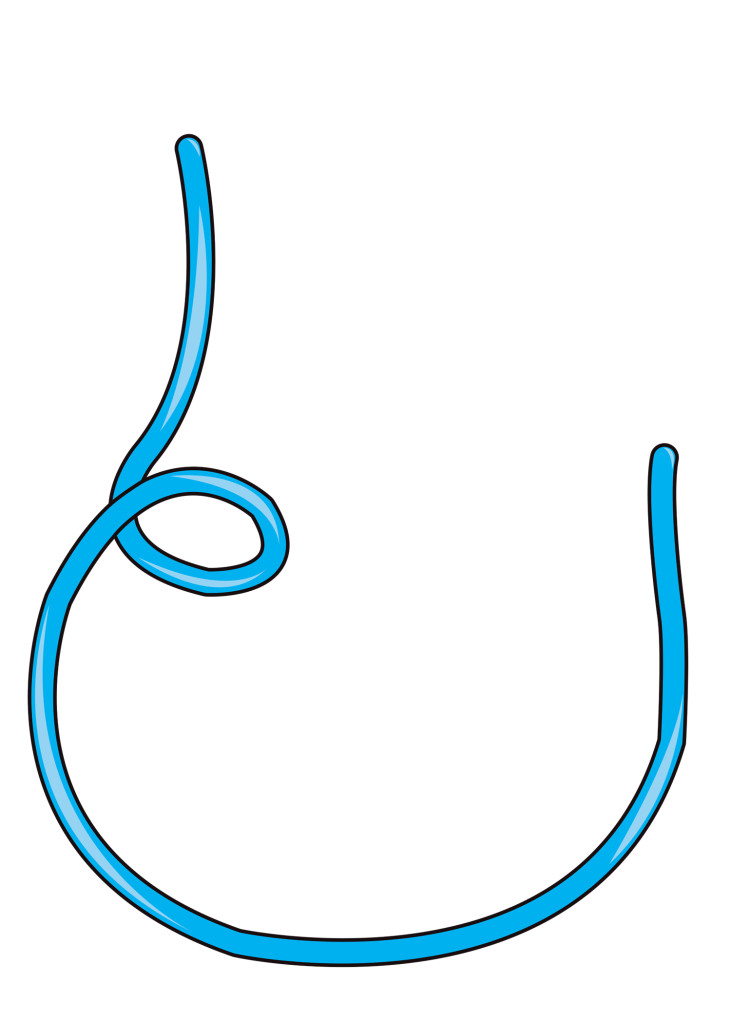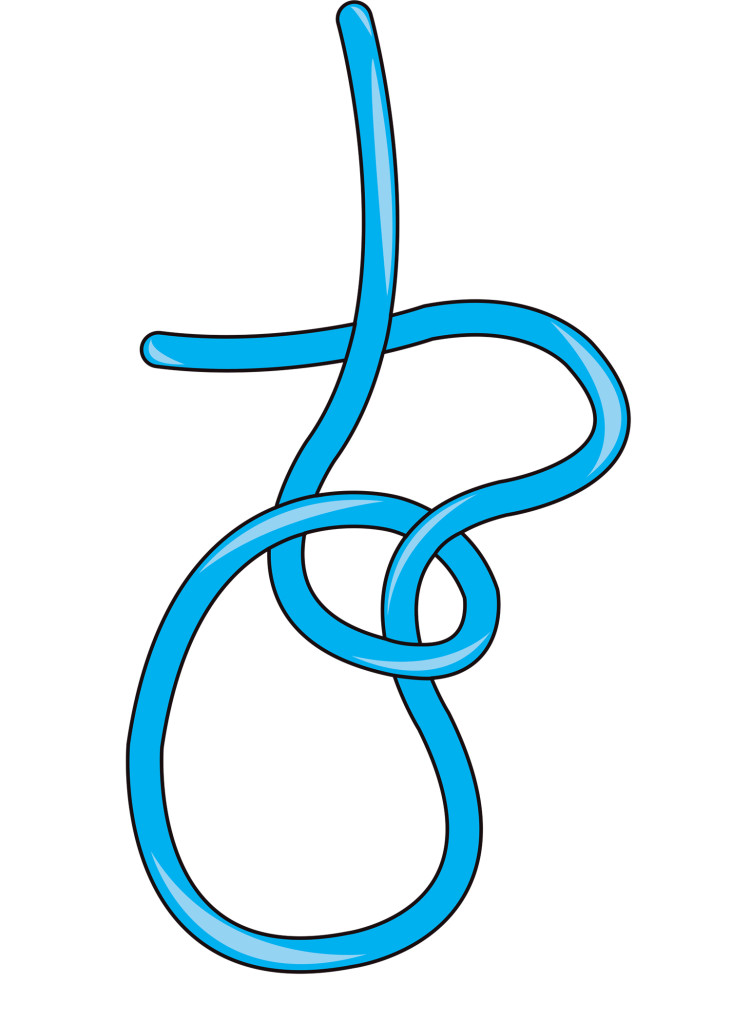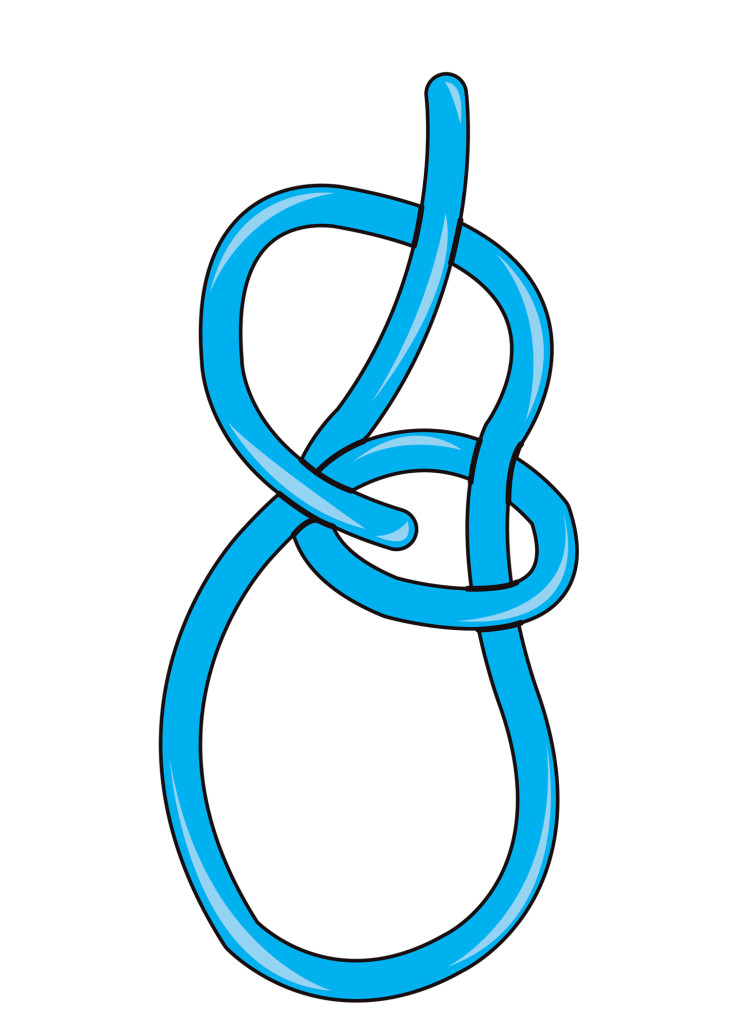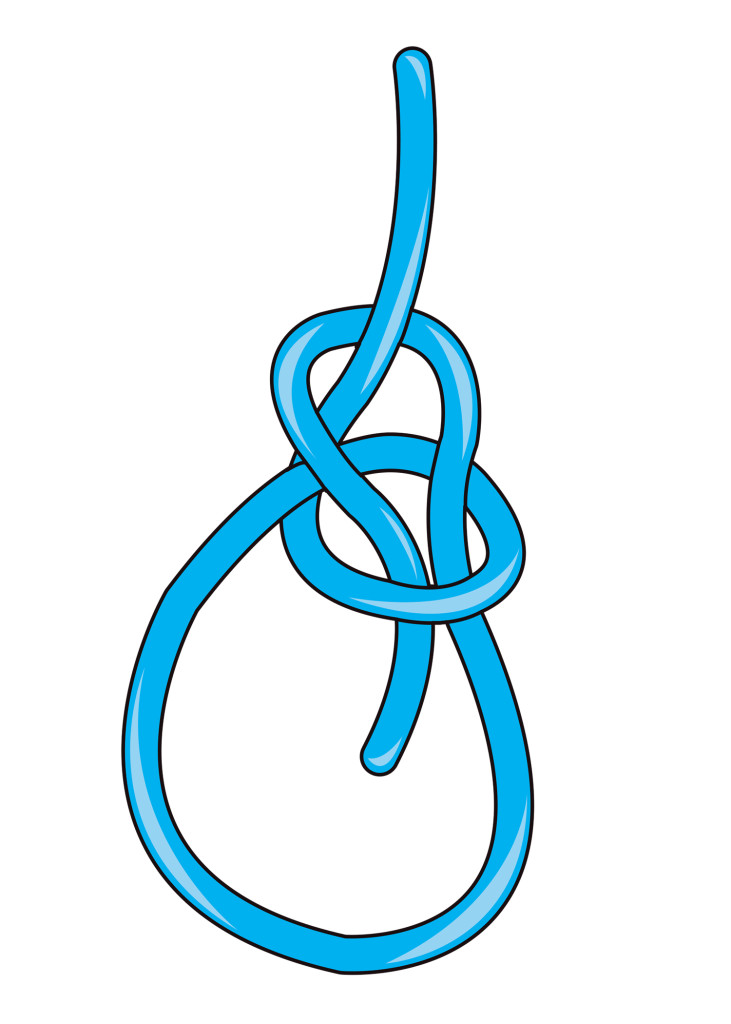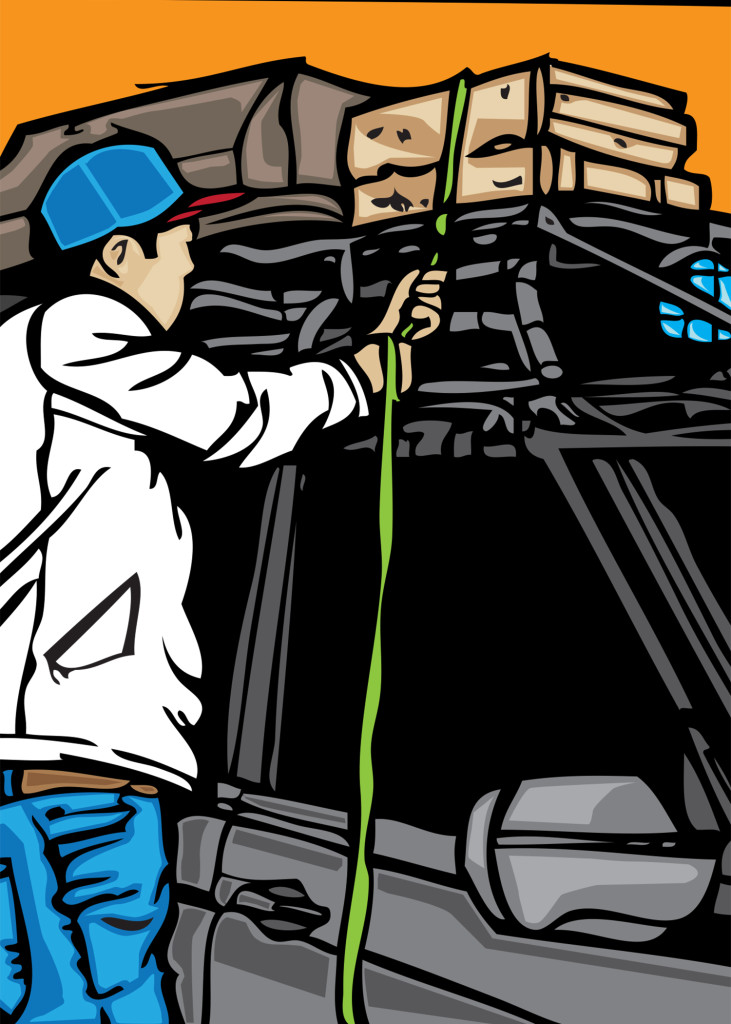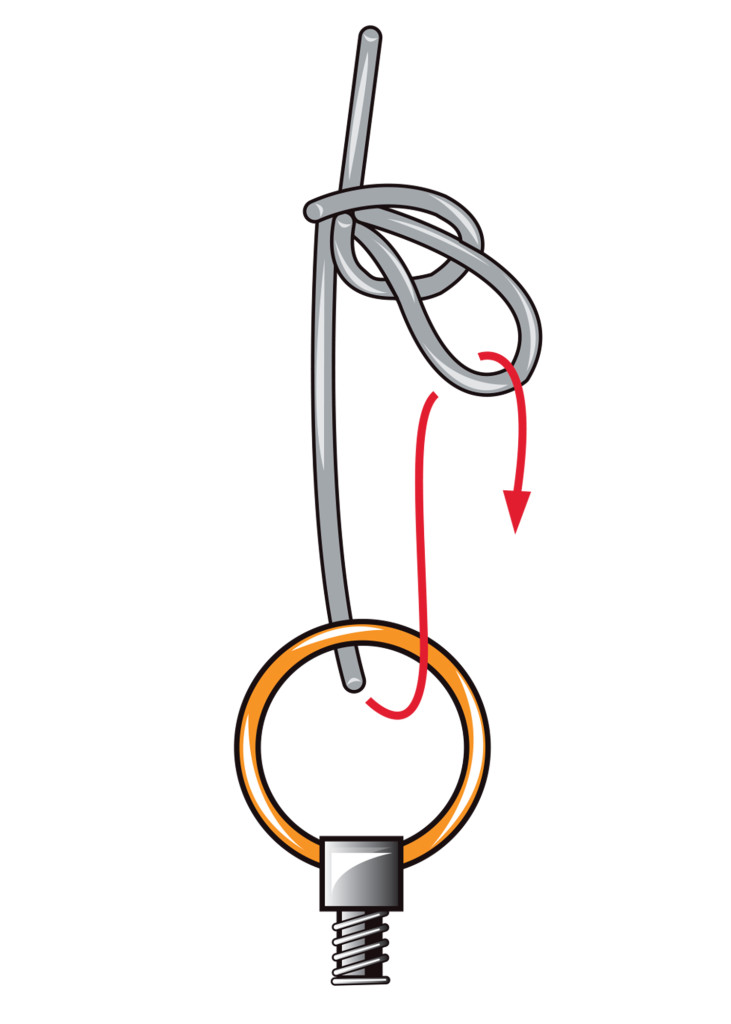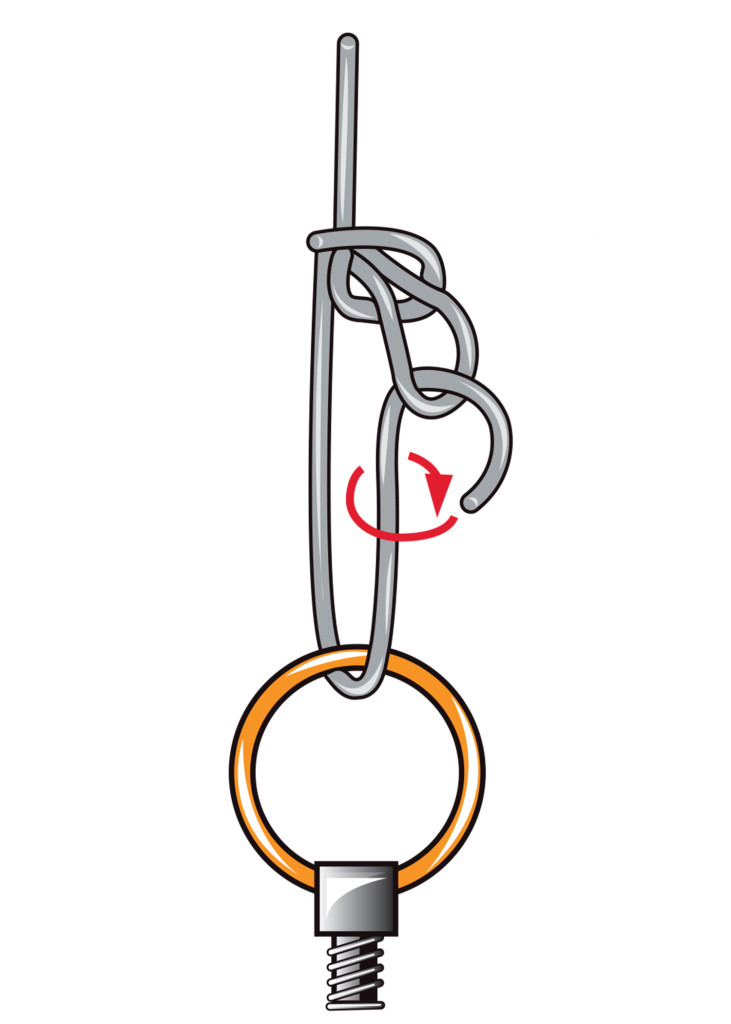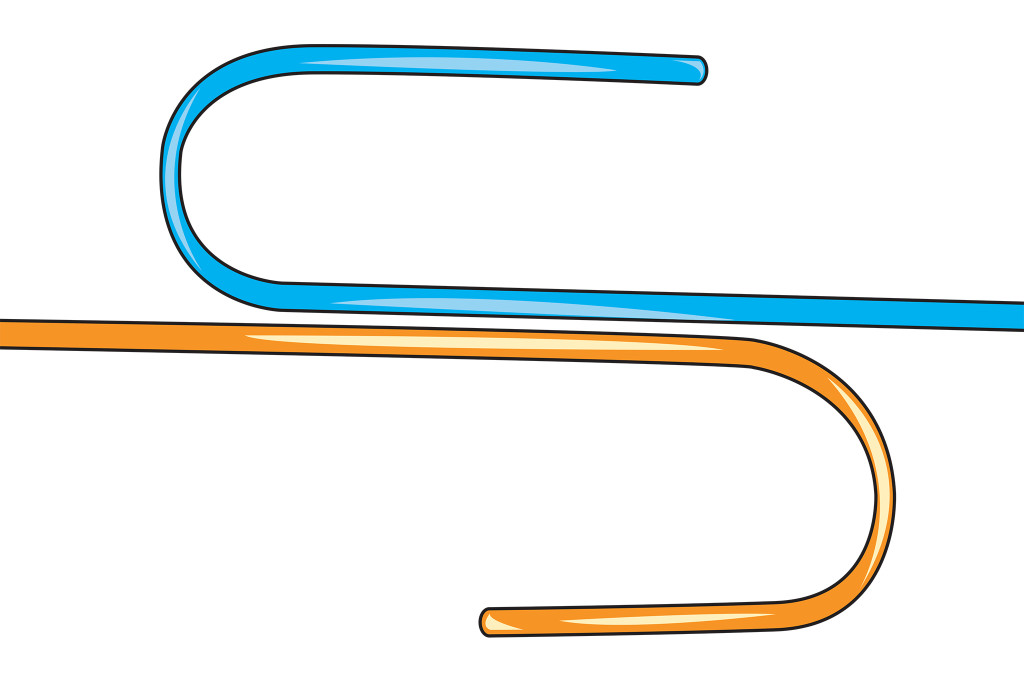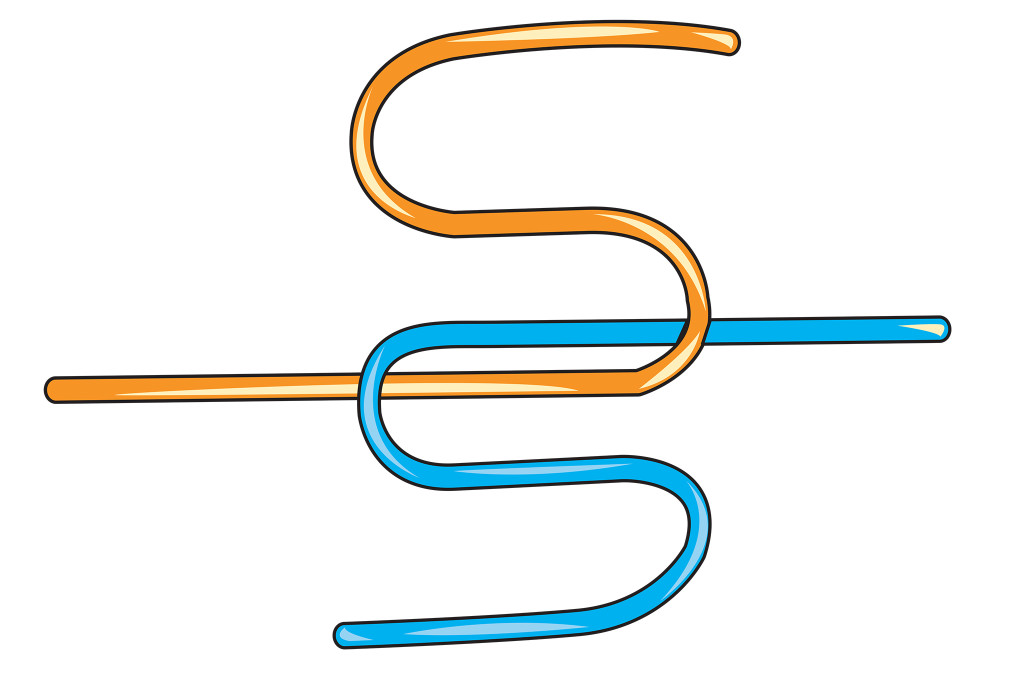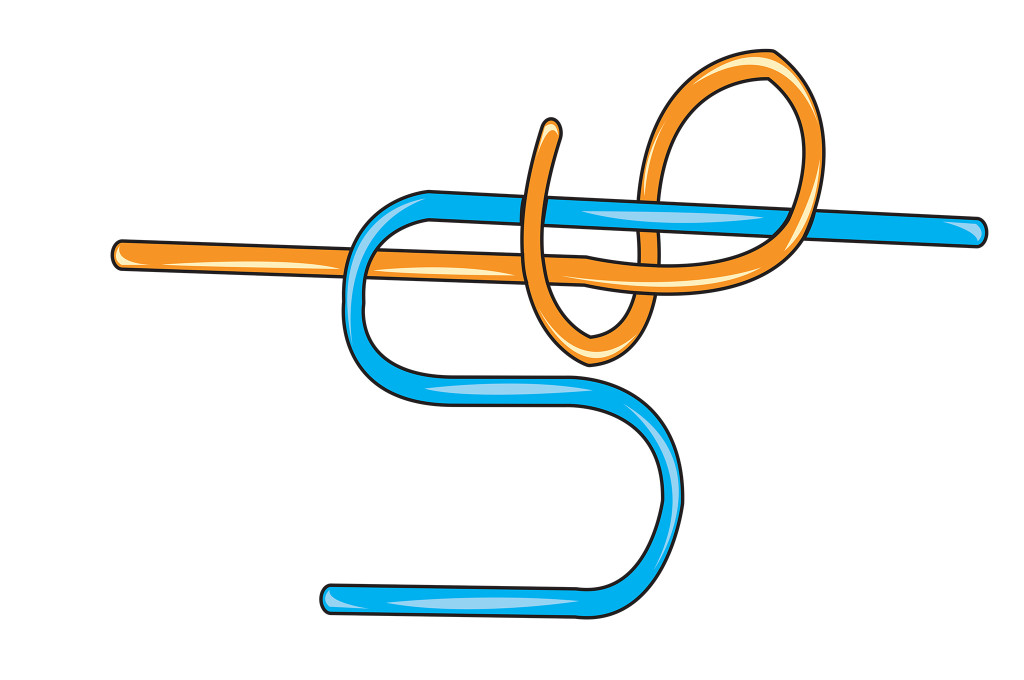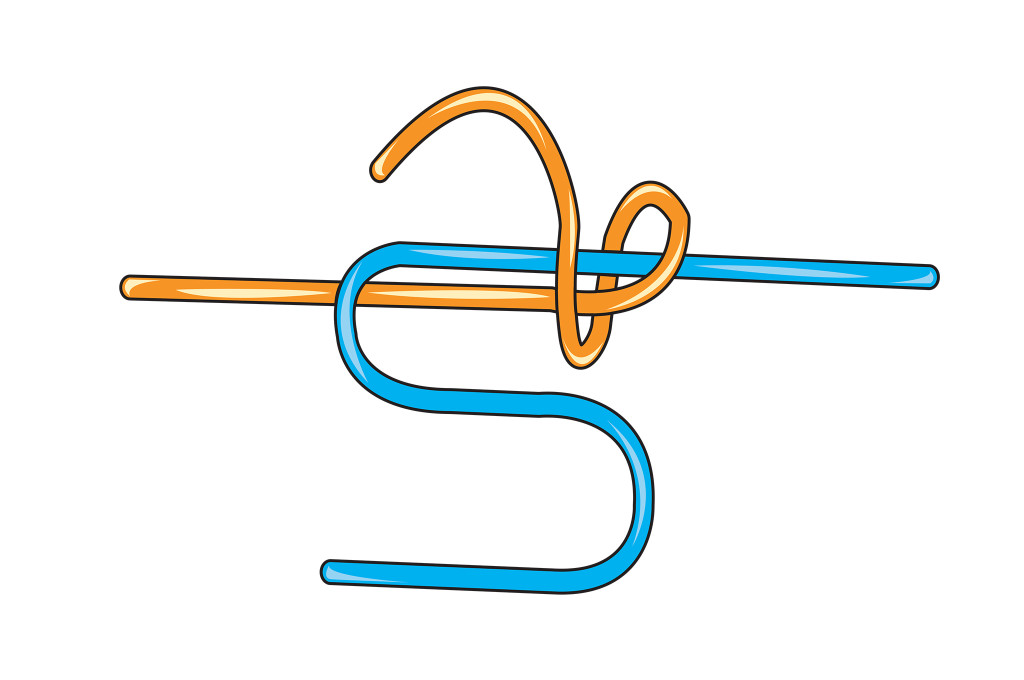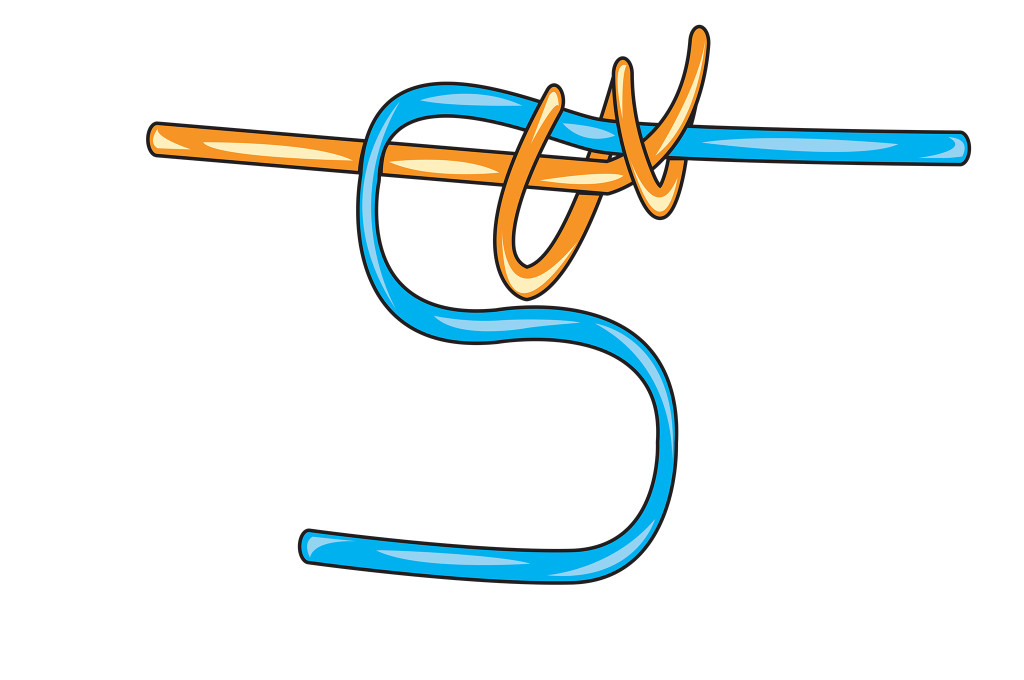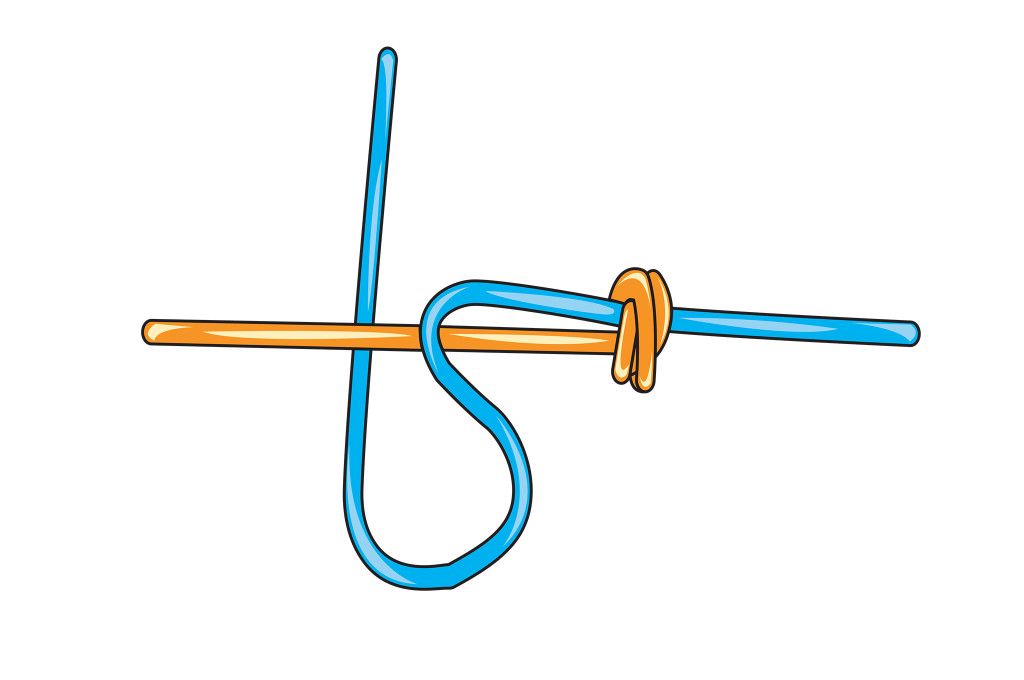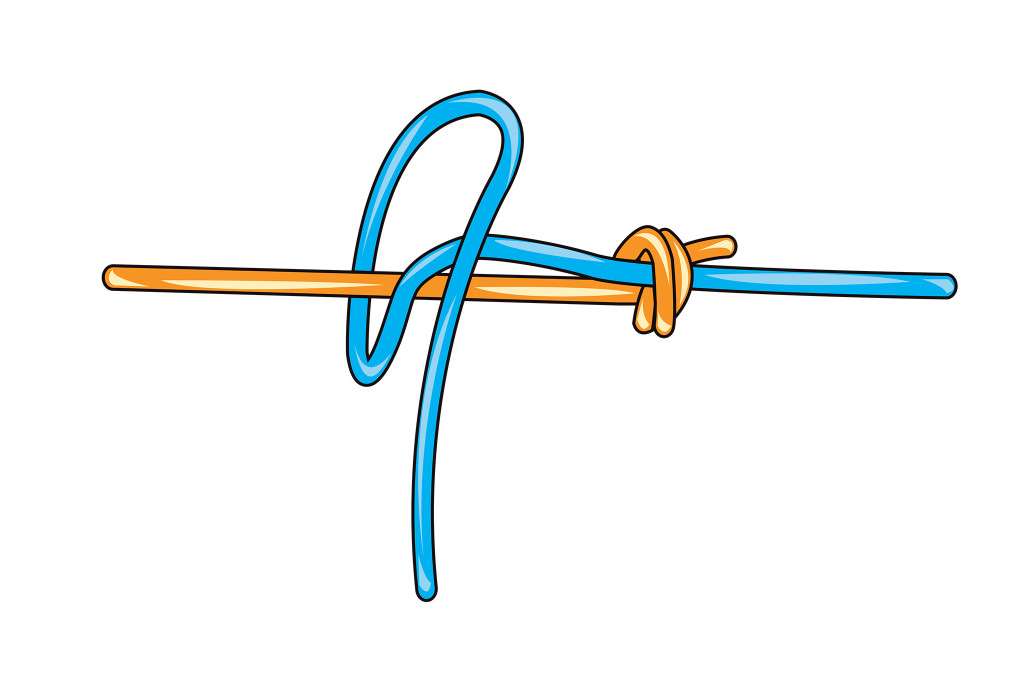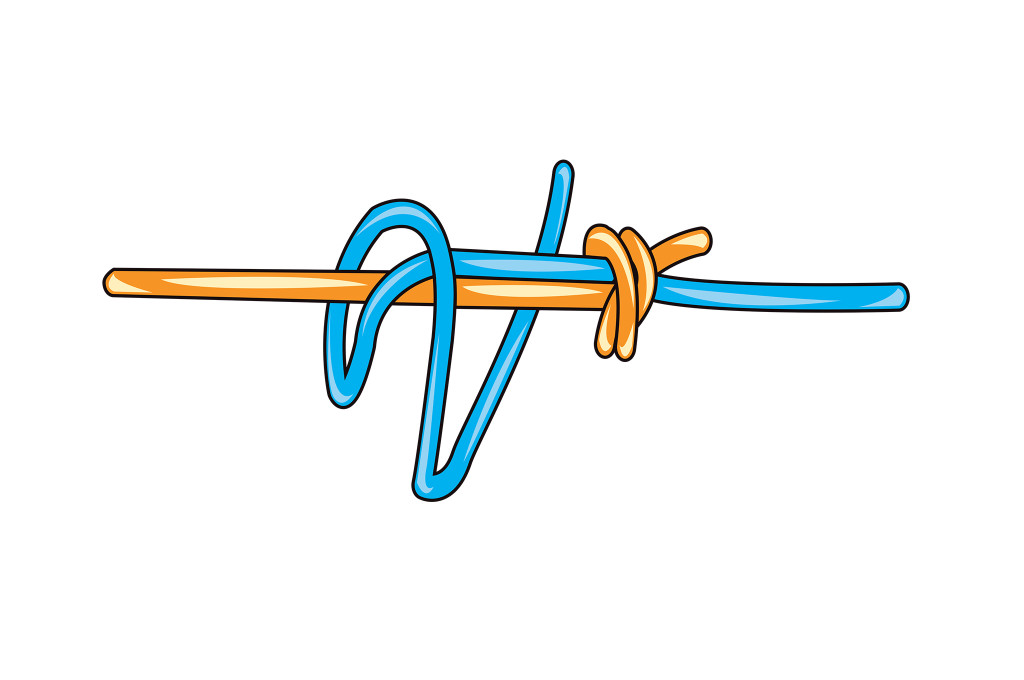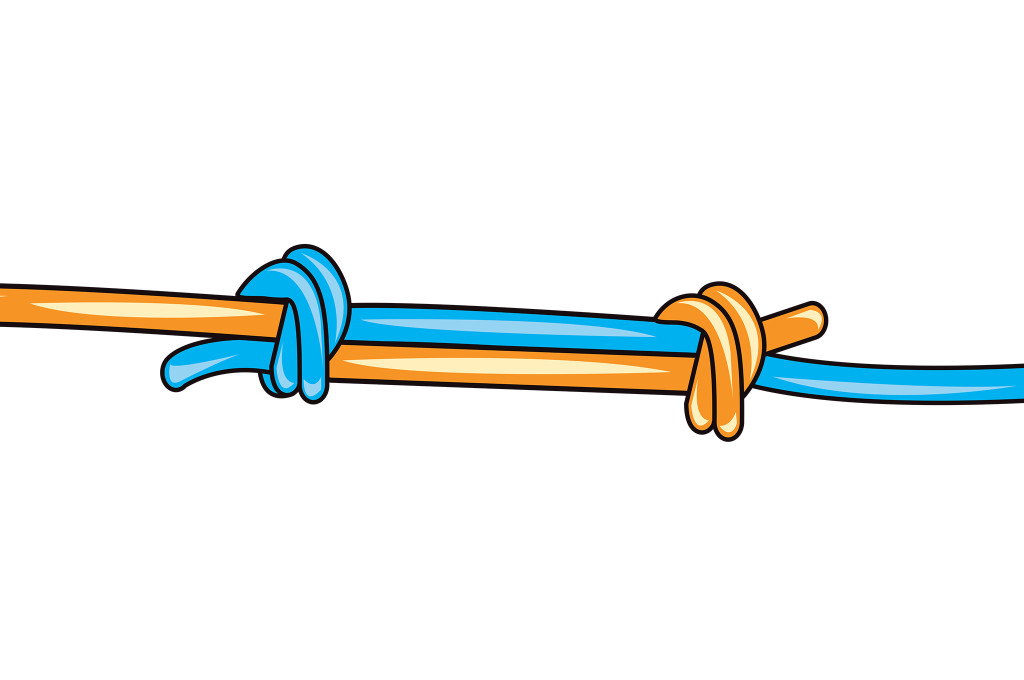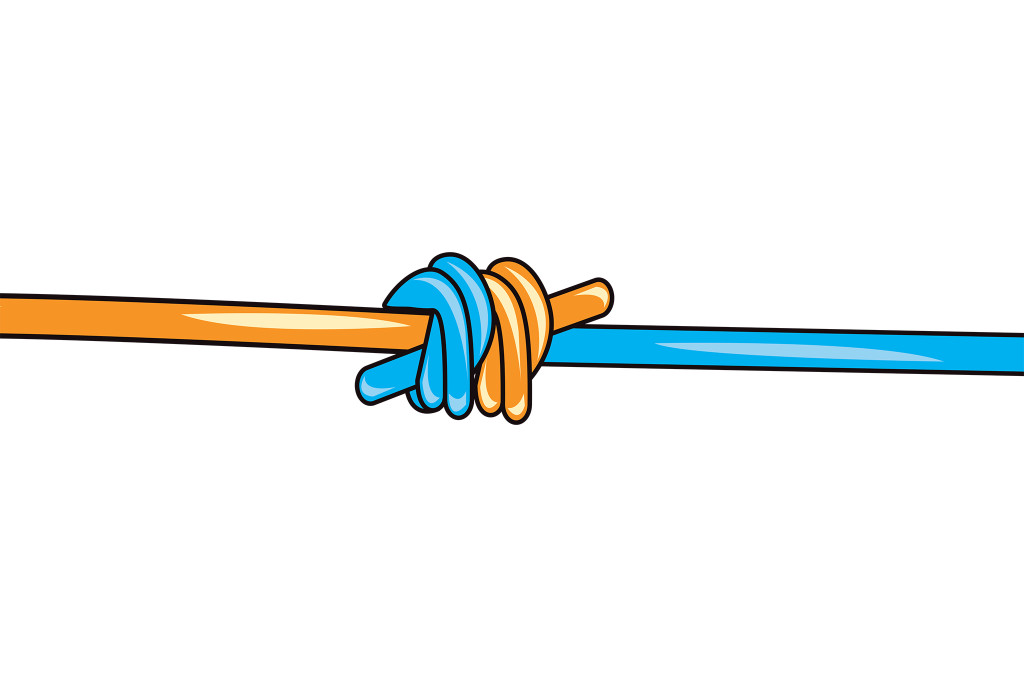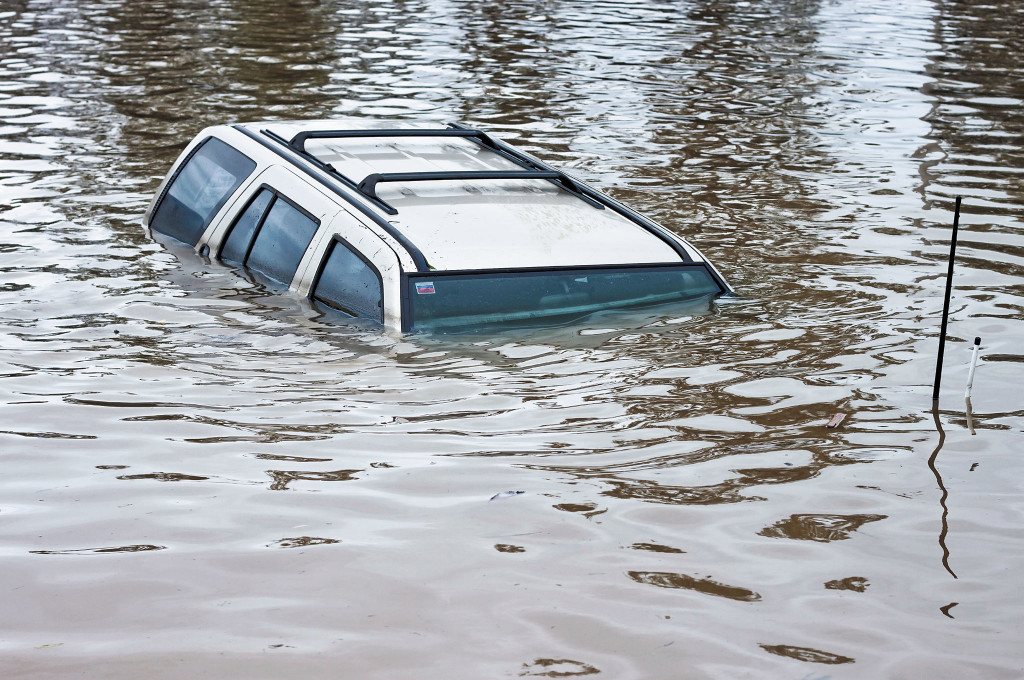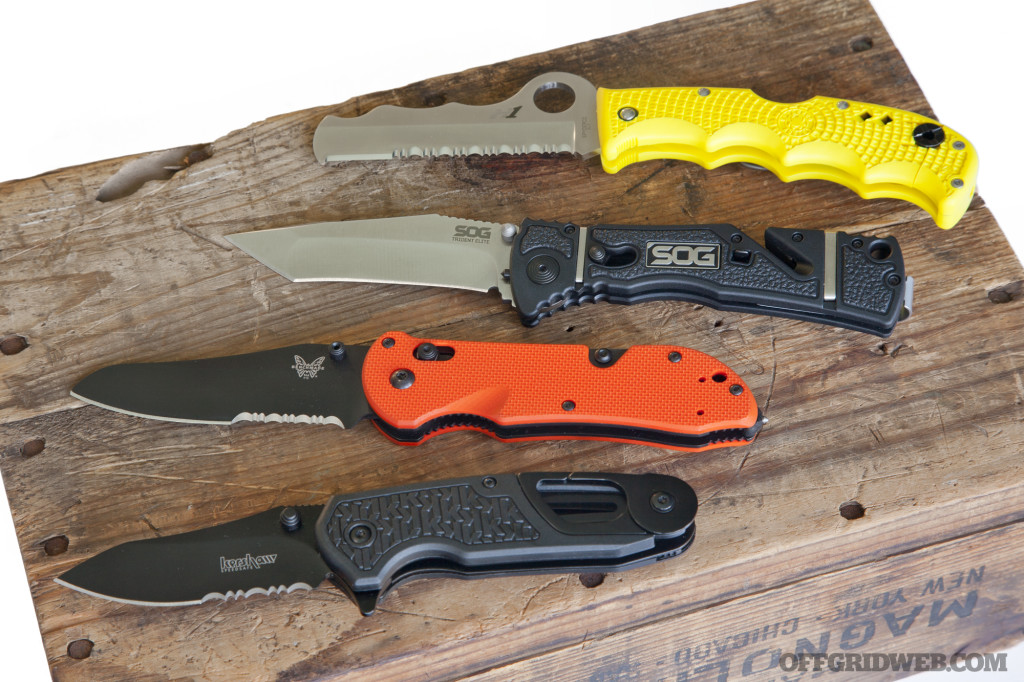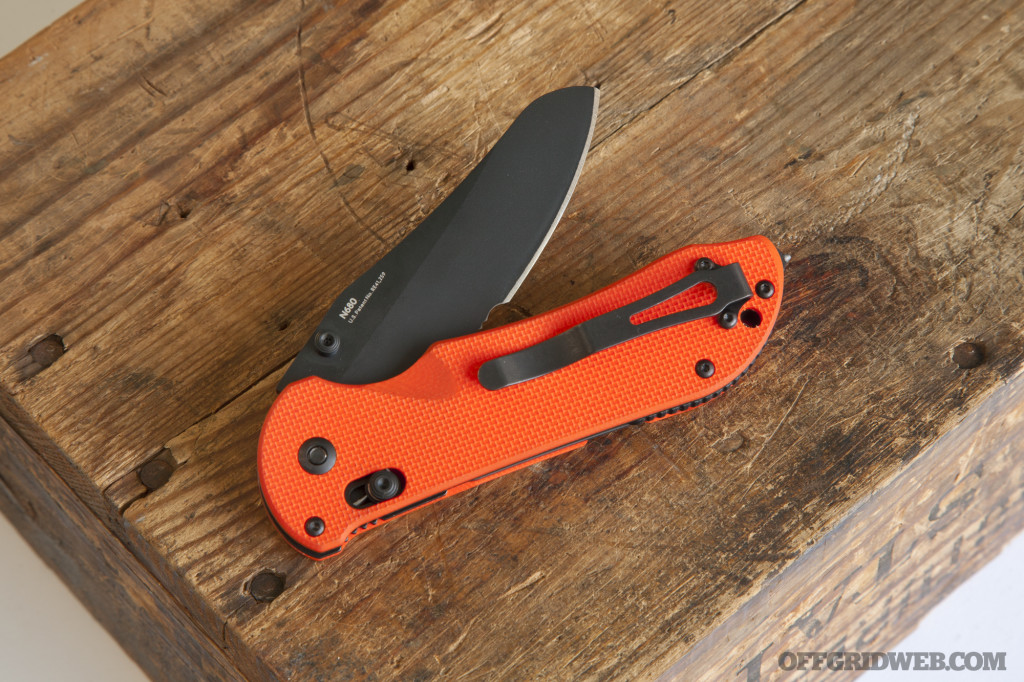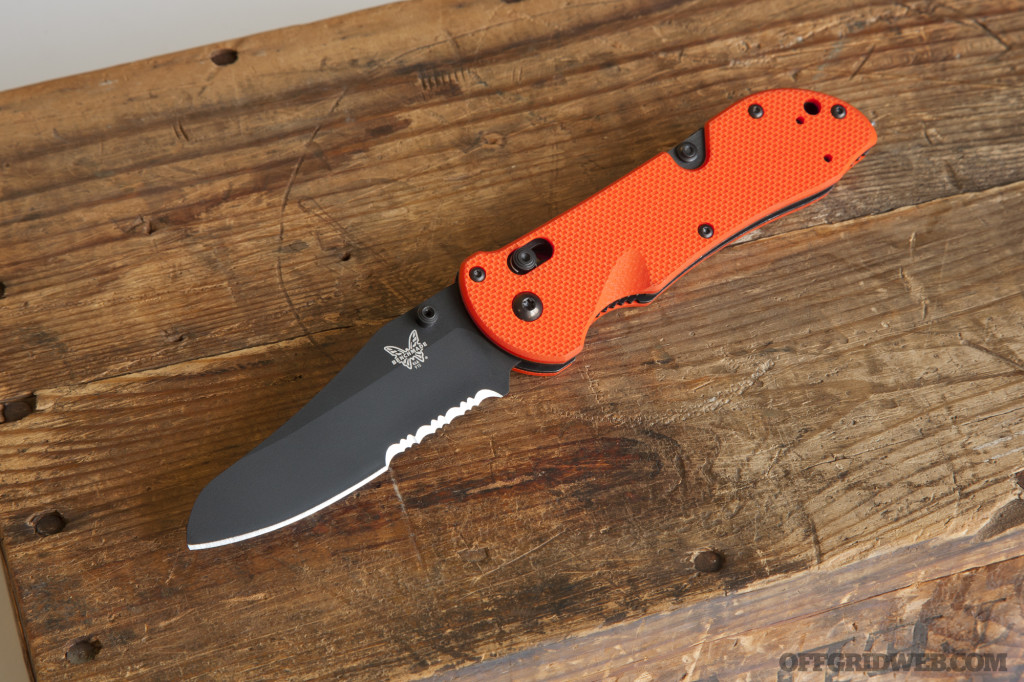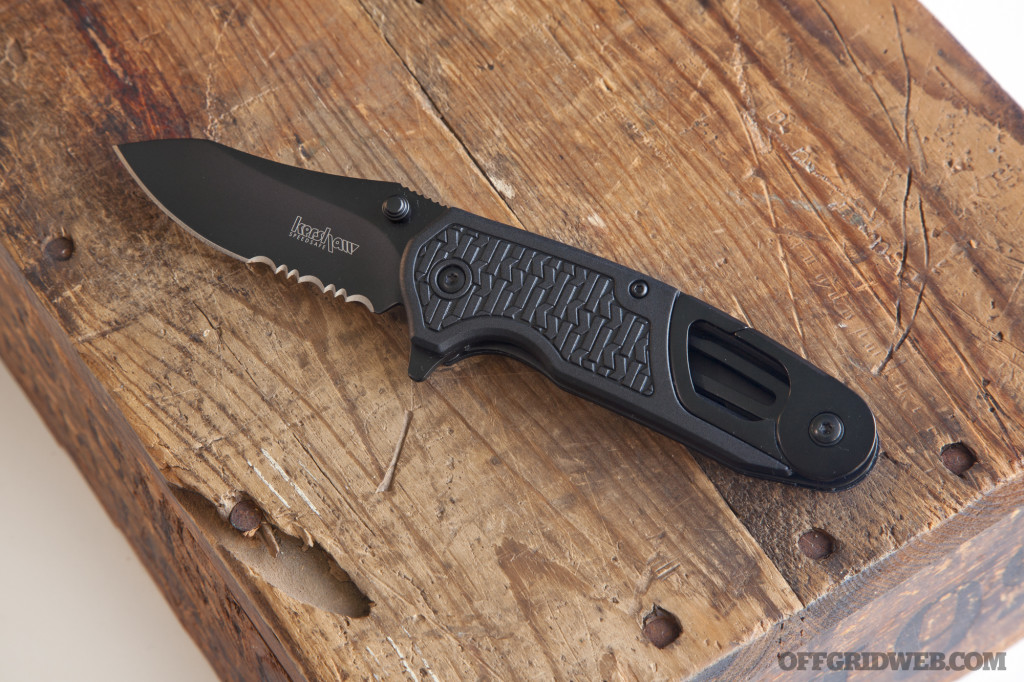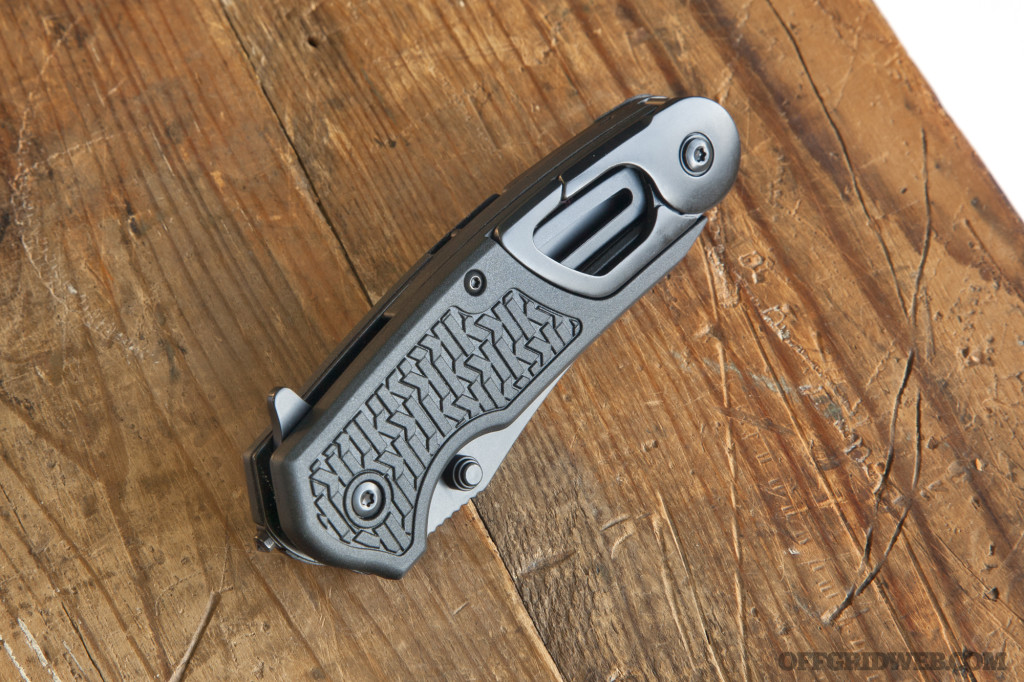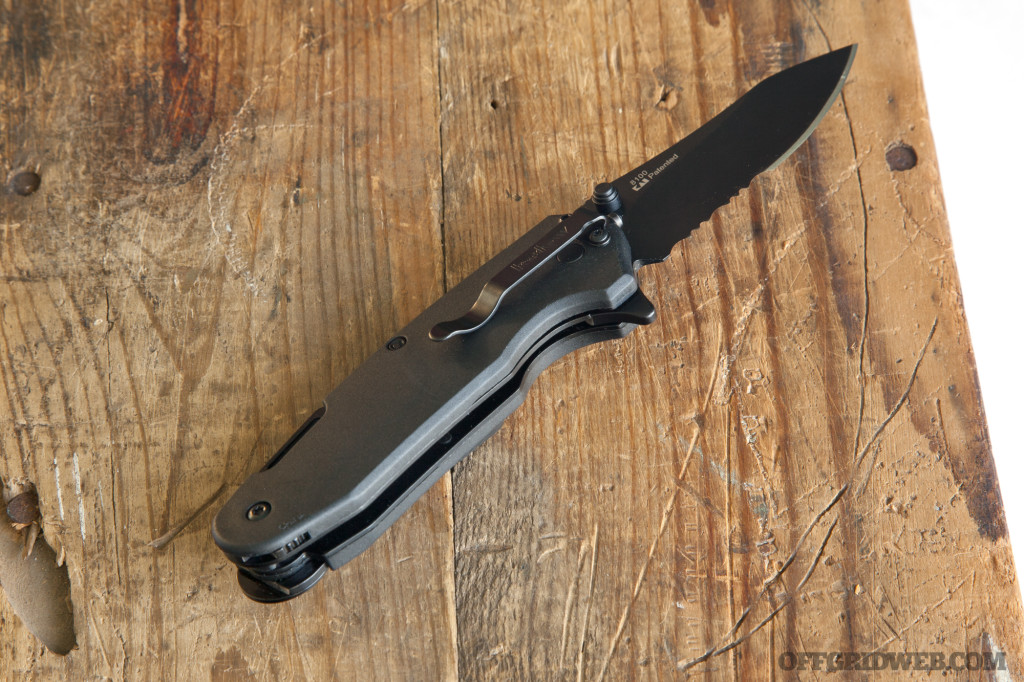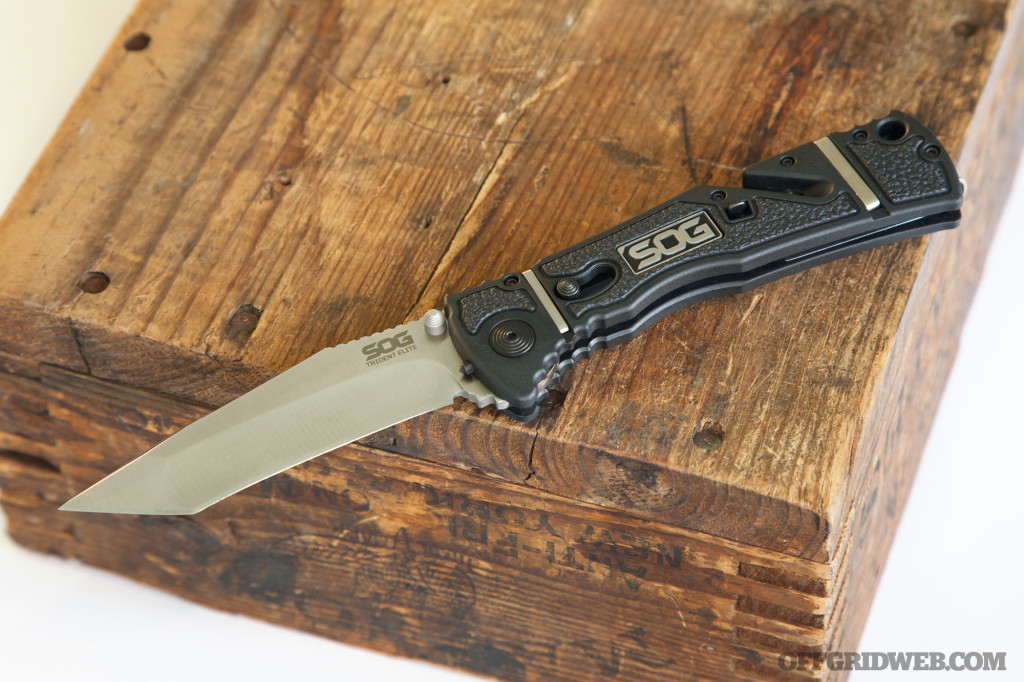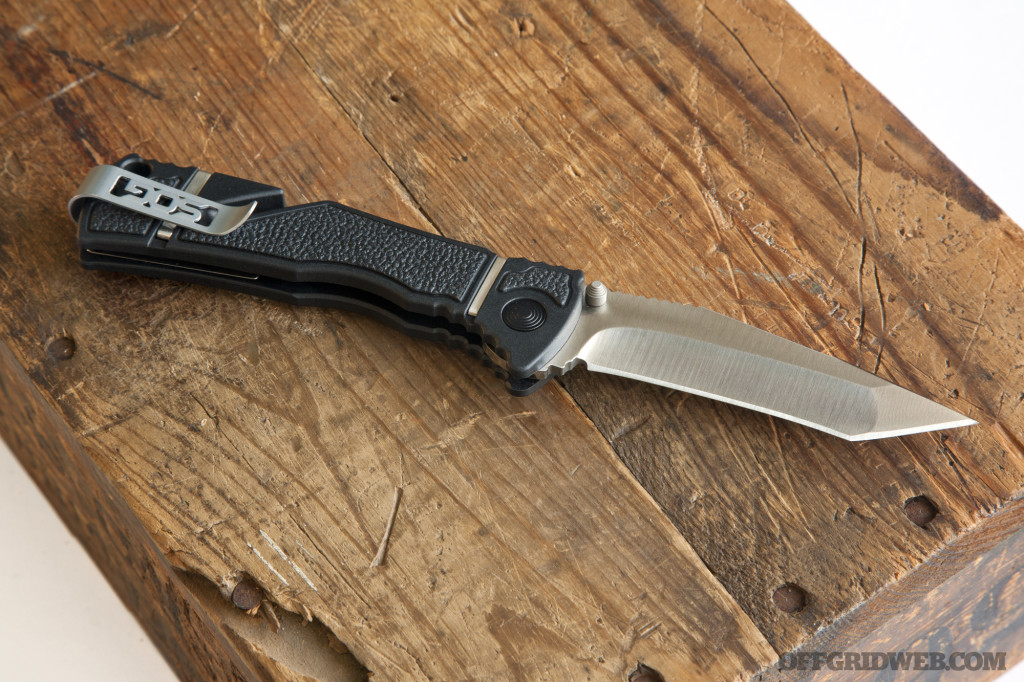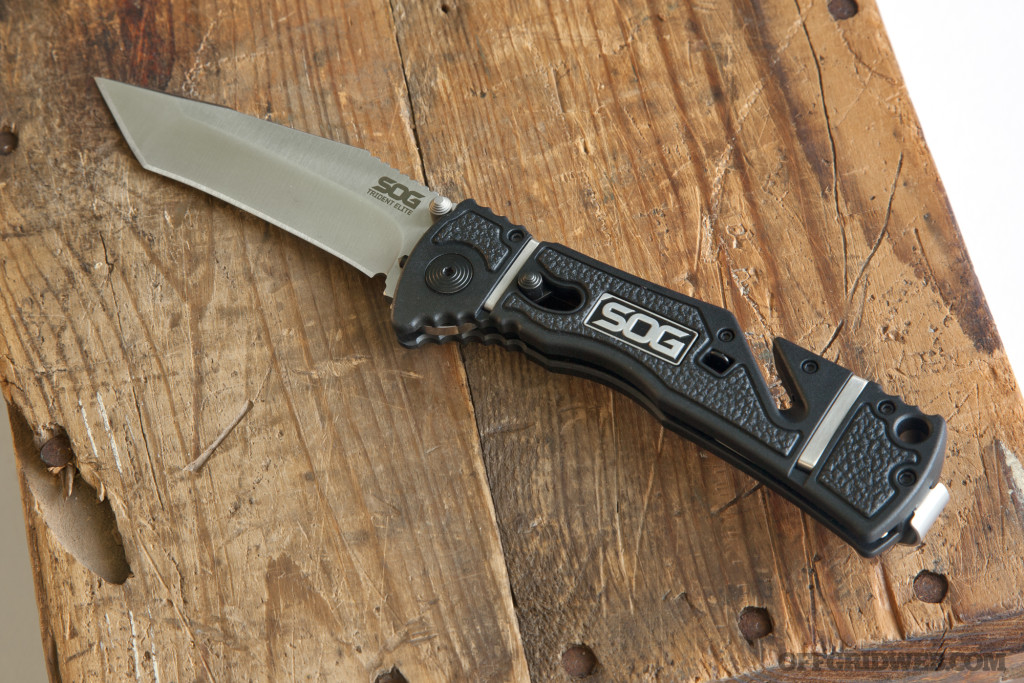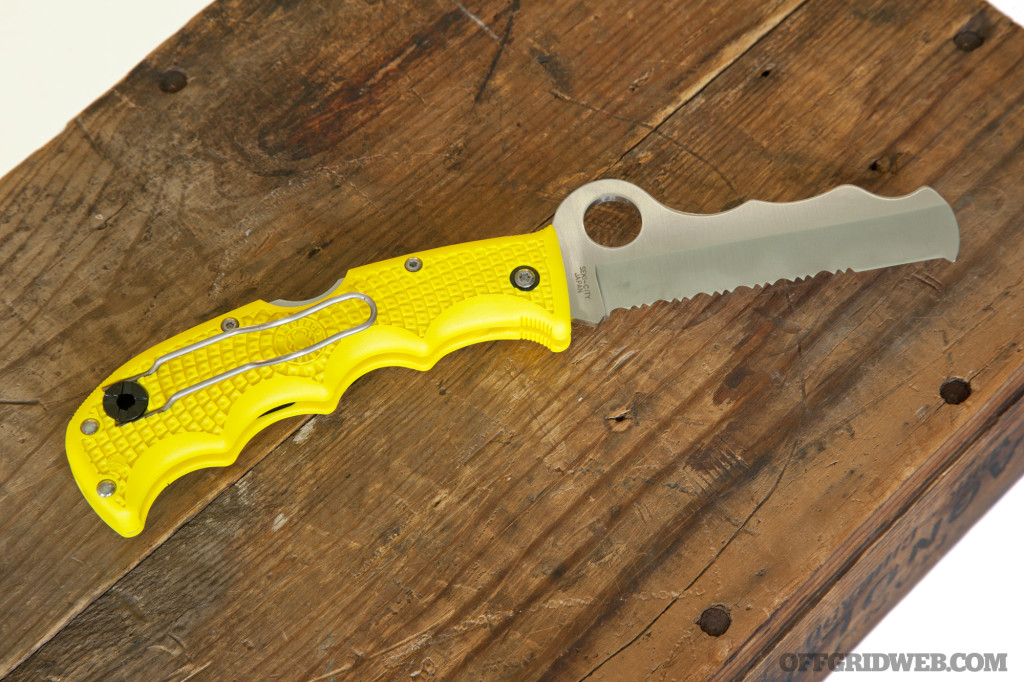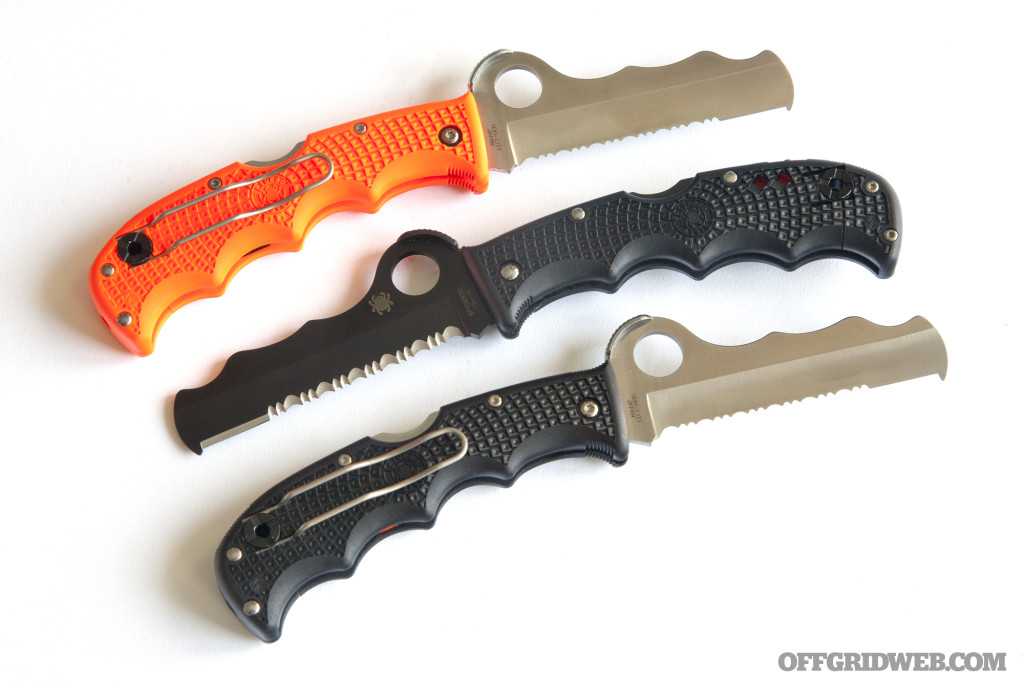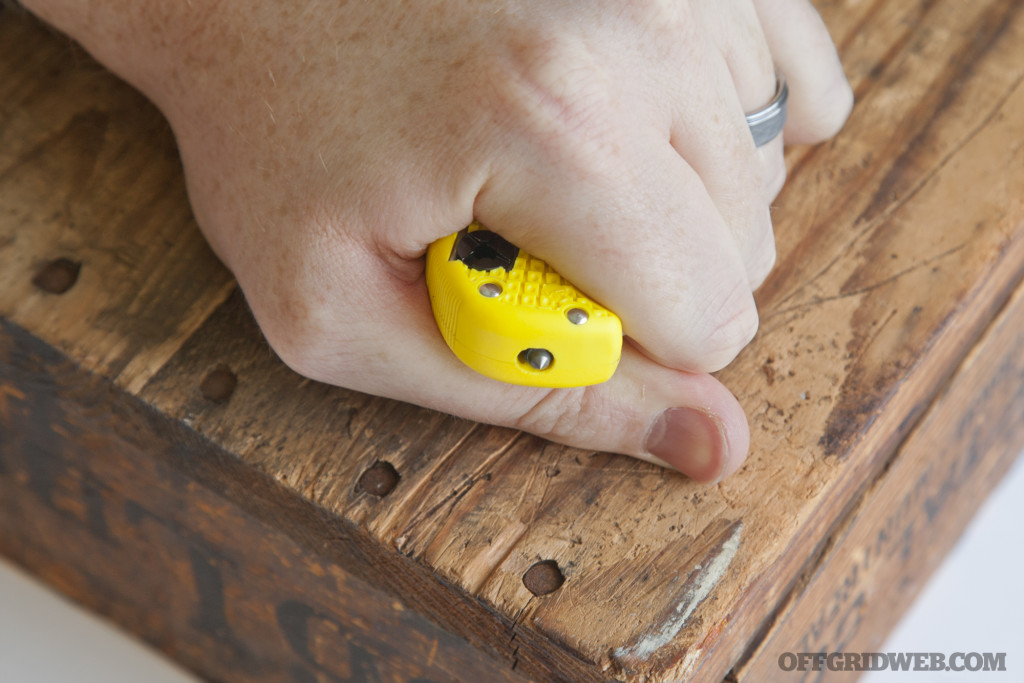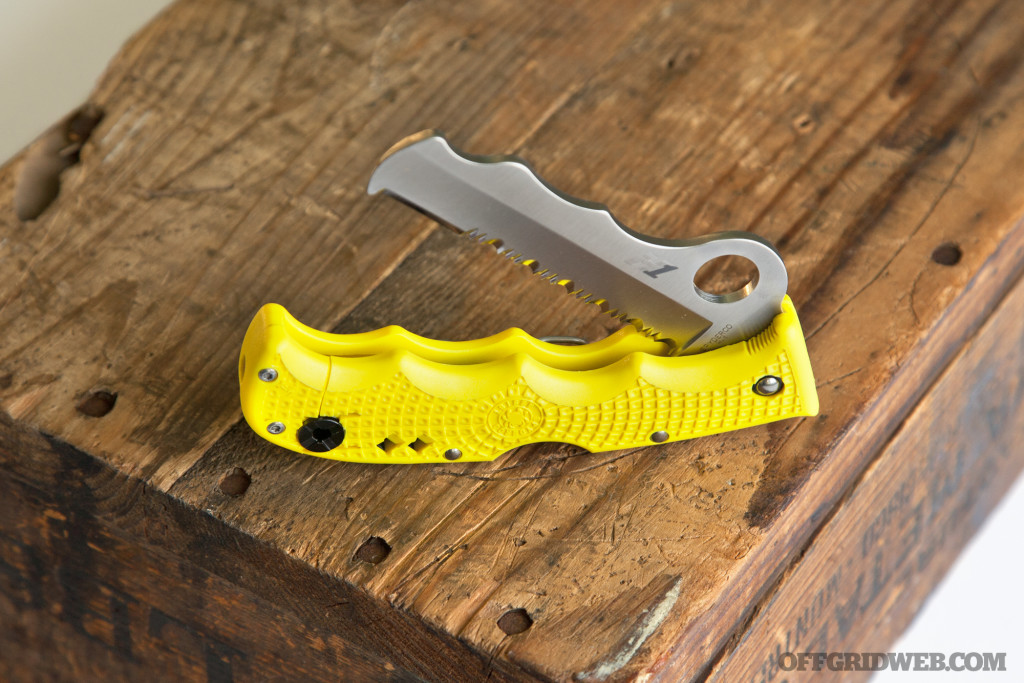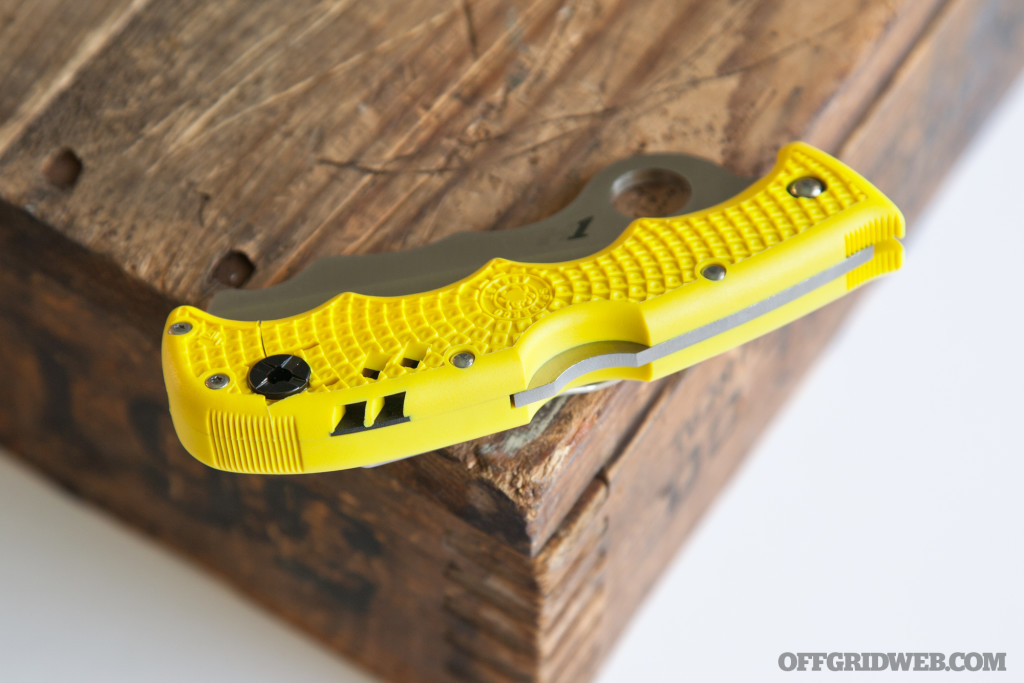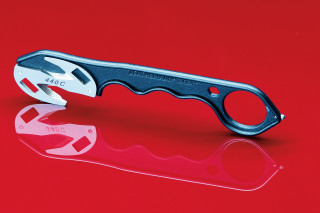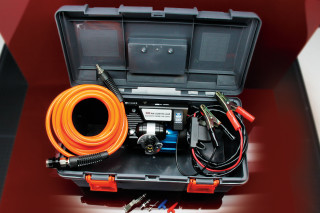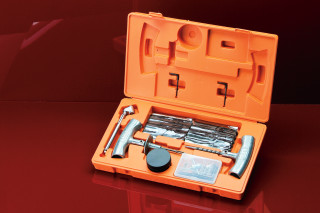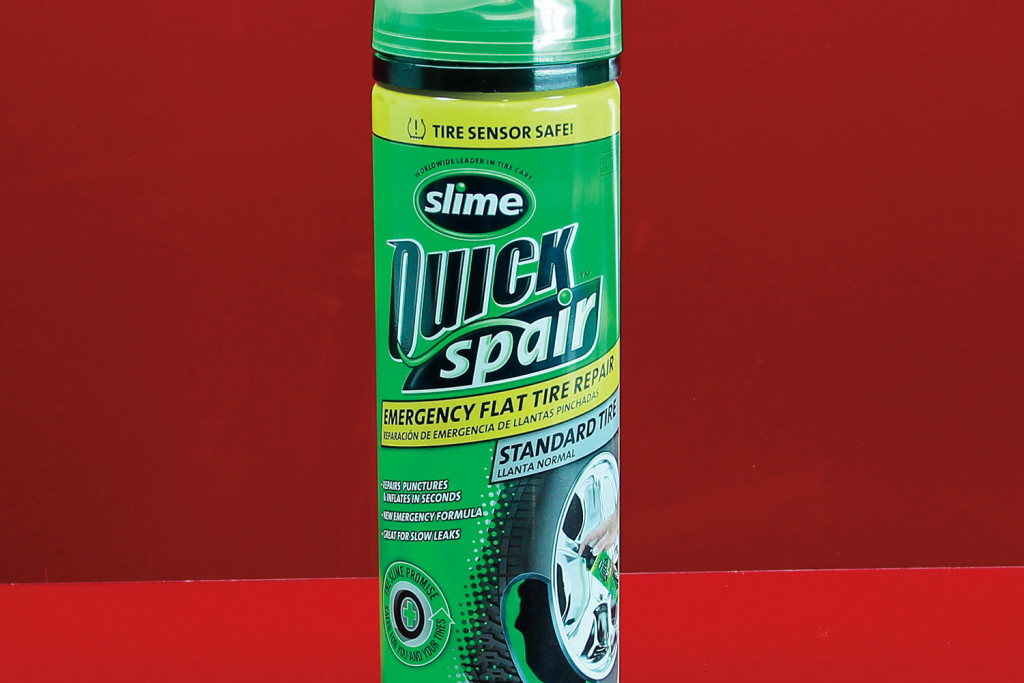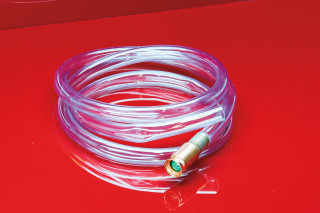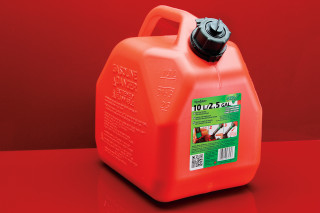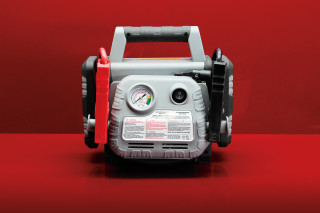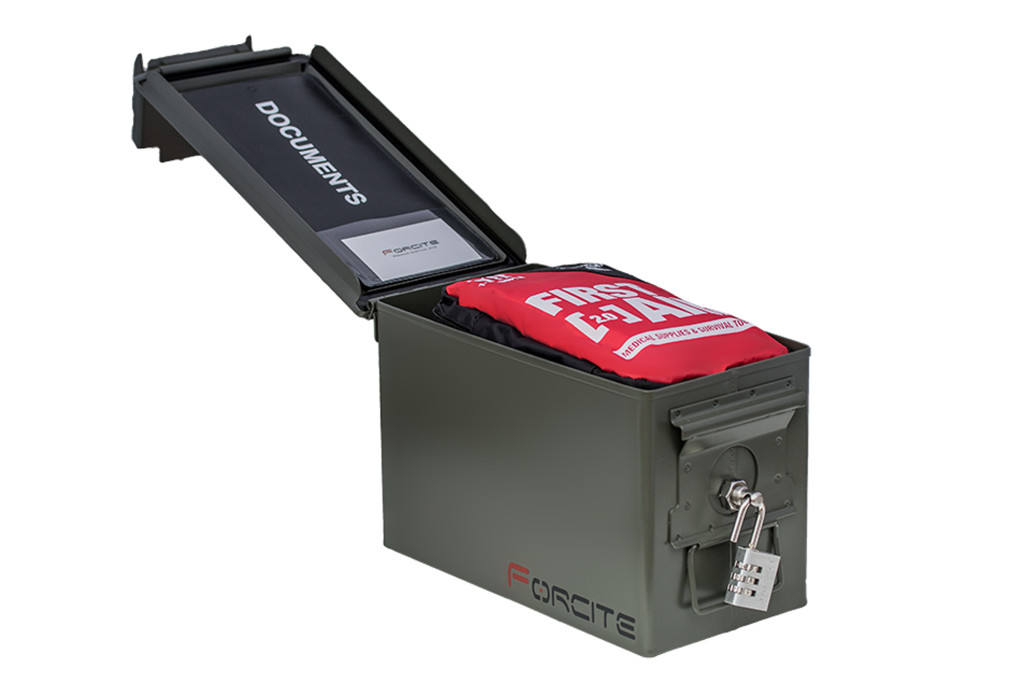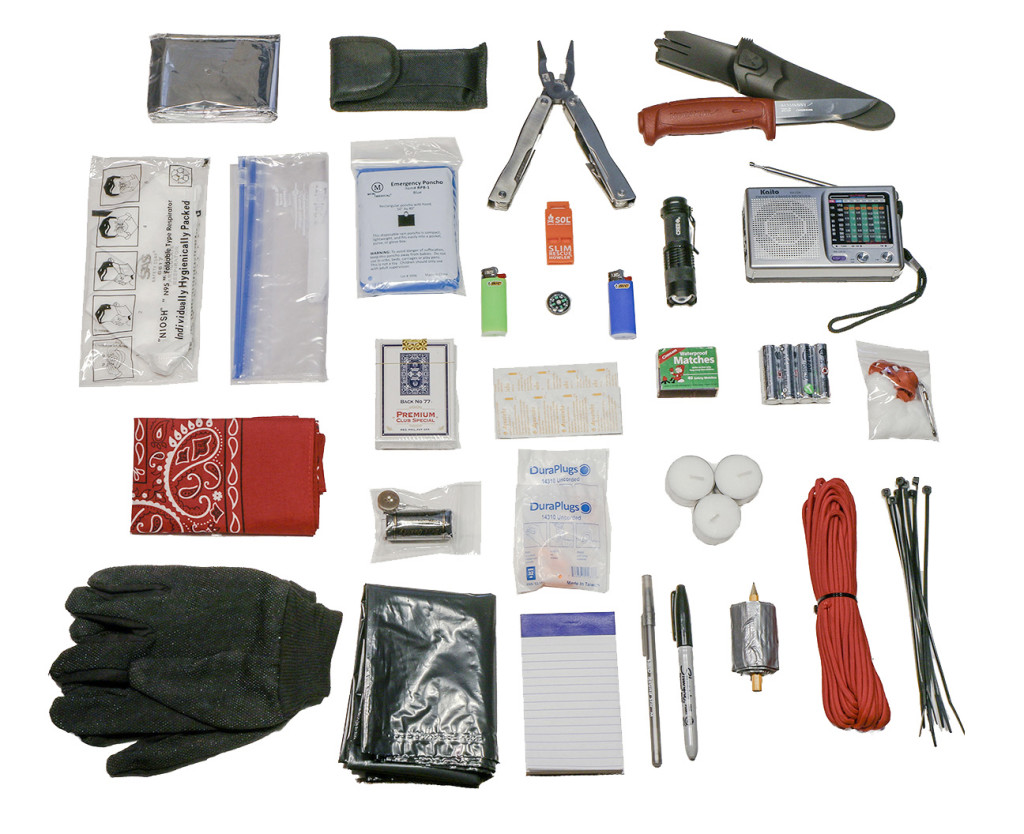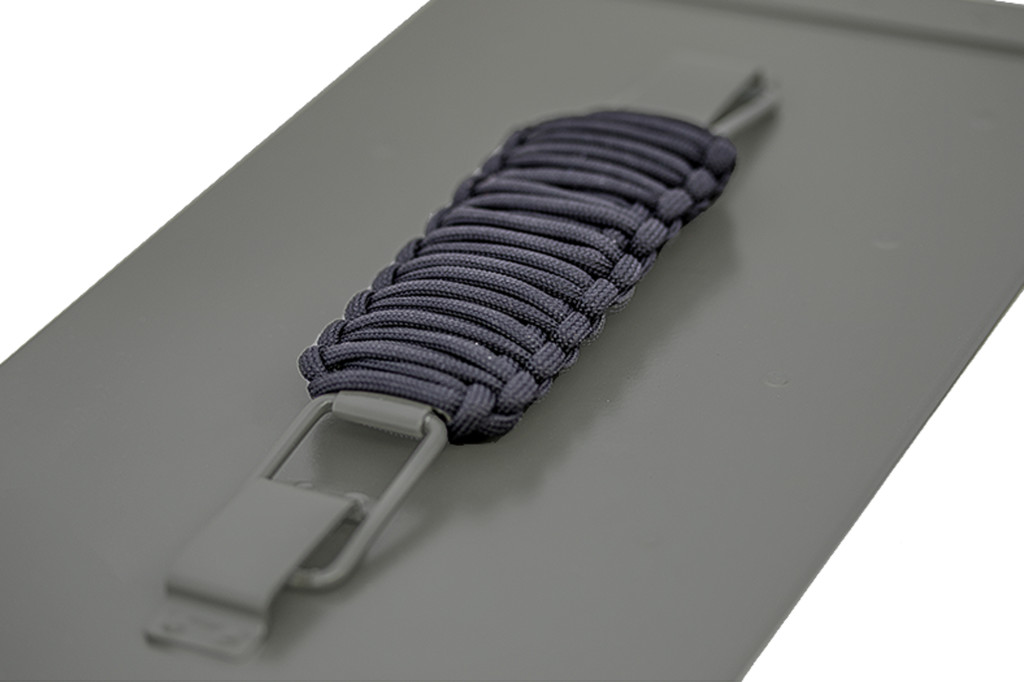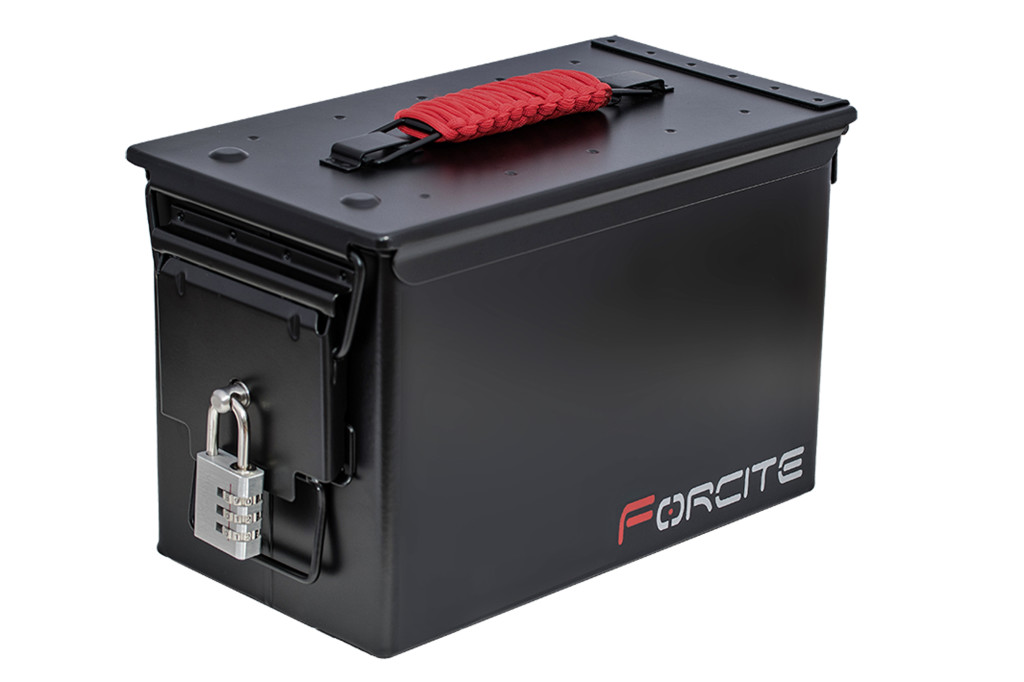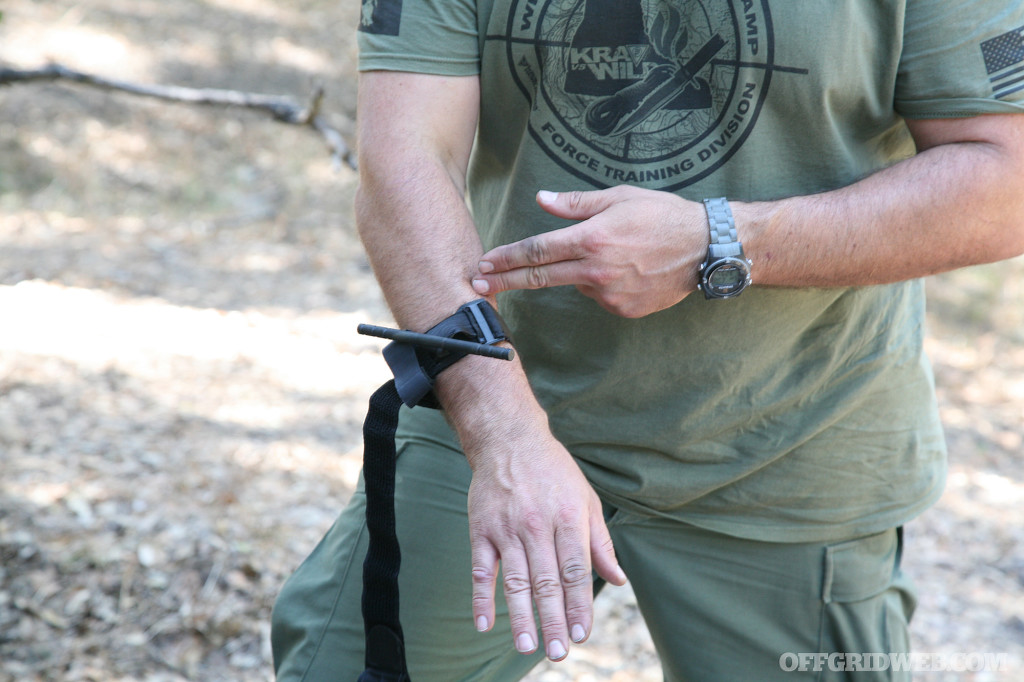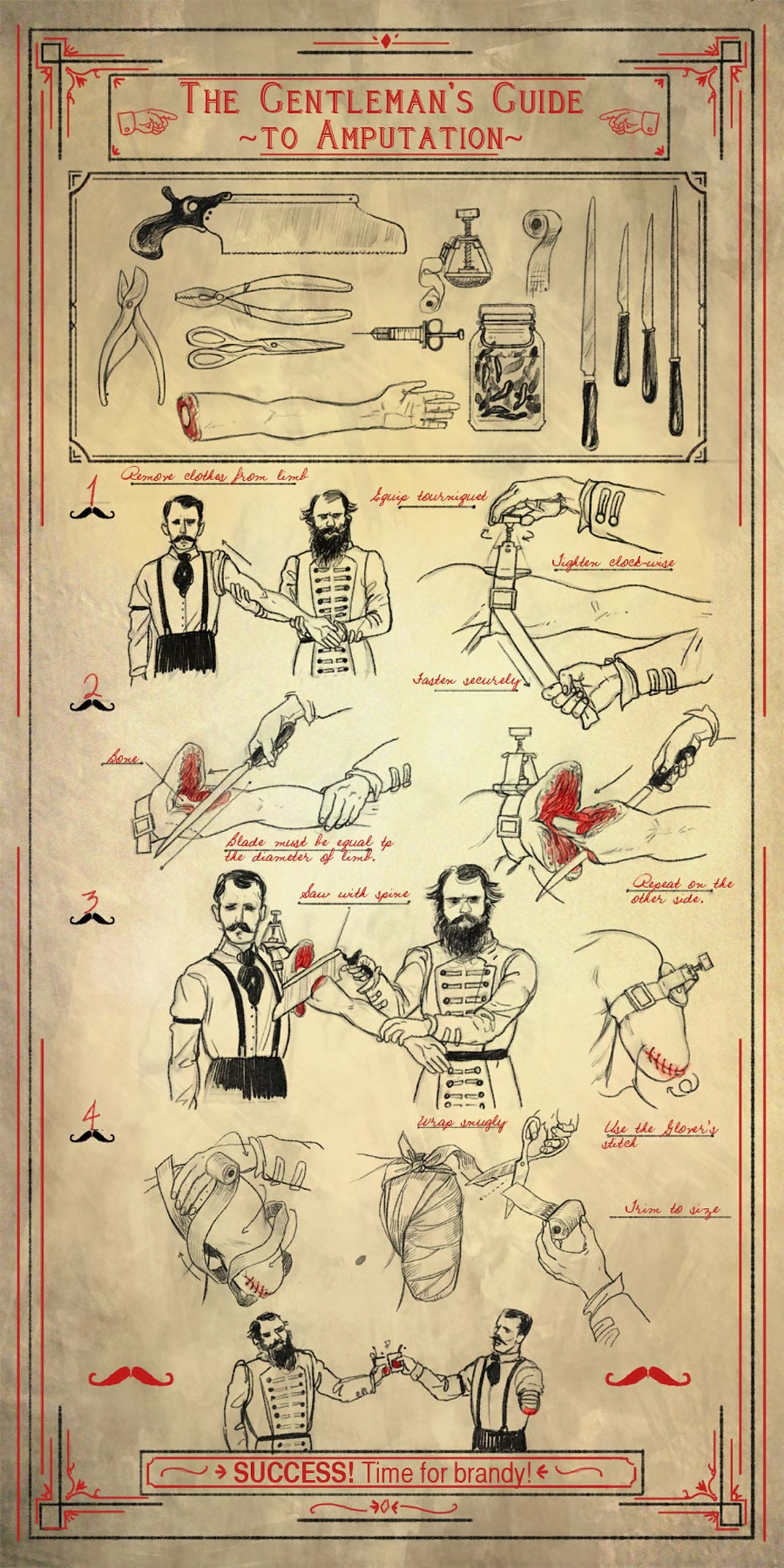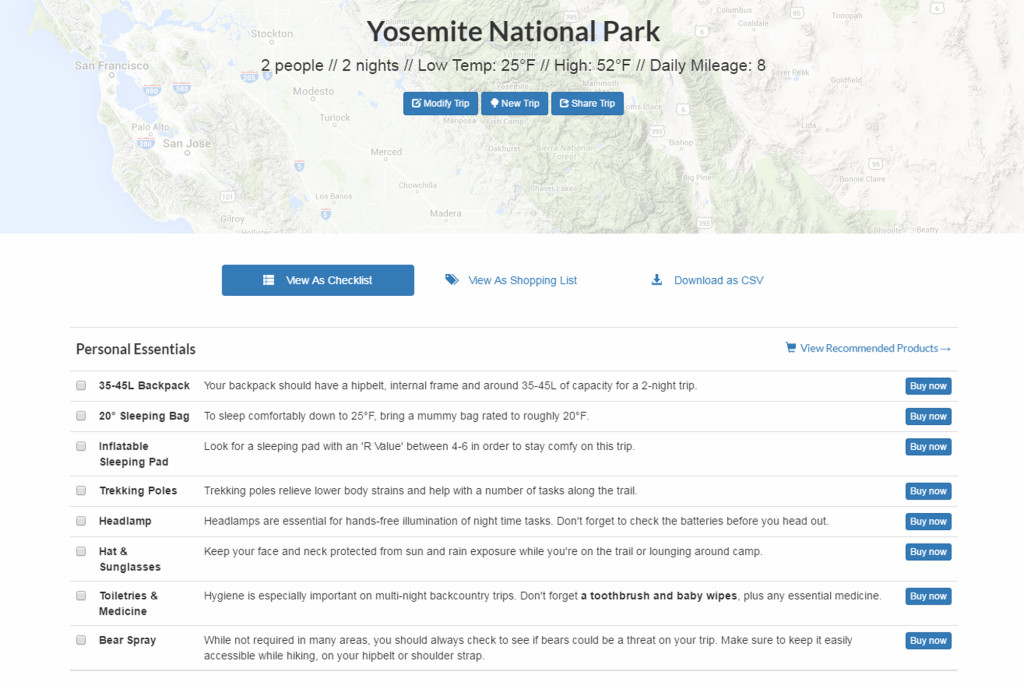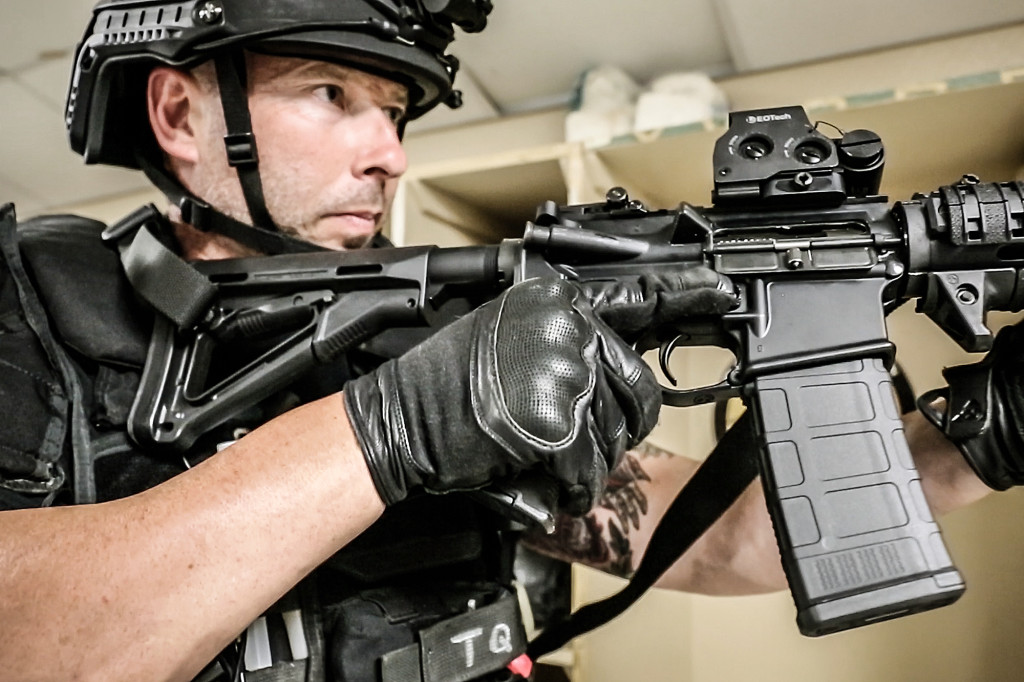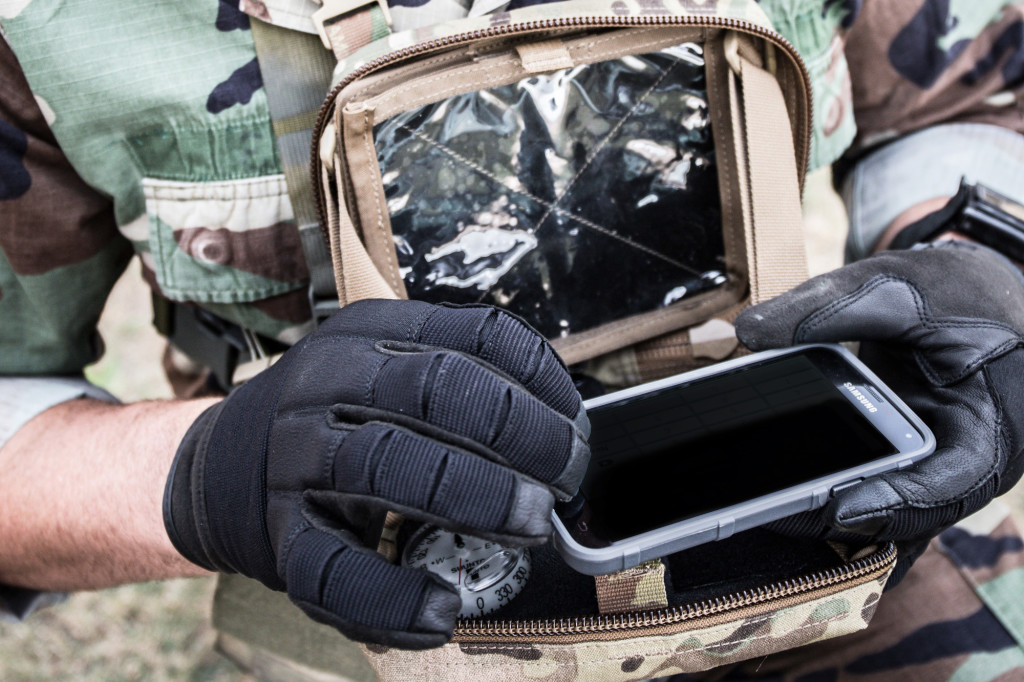This article was originally published in Issue 1 of our magazine.
Urban disasters come in all shapes and forms. Whether it is a small-scale power outage or full-scale breakdown of society, there are strong arguments to be made for having a firearm.
Guns are the great equalizer, allowing even a small-framed woman to fend off a bulked-up muscle-bound brute. With proper training, they can provide protection for you, your family, and your property in uncertain times.
Firearm Safety
Before we start delving into the selection or the use of firearms, we need to talk about firearm safety. There are four universal firearm safety rules, and while often worded differently, the theme is always the same.
If I were to add a fifth safety rule, it would state: You are responsible for the storage and care of your firearms. With these safety rules in mind, we can all grasp the idea that firearms are tools, and like a vehicle or a chainsaw, they can all be dangerous if used improperly. The key to proper use is proper training.
Universal Firearm Safety Rules
1. Treat all guns as if they are loaded.
2. Never point a gun at anything you are not willing to kill or destroy.
3. Keep your finger off the trigger until your sights are on target and you are ready to fire.
4. Be aware of your target, as well as what is in front of it, around it, and behind it.
Selecting a Firearm
What should you look for in a firearm? The answer for that one lies within what your intent is for the firearm itself. Buying a gun to carry every day is different than buying one to keep in your house. A shotgun can easily defend your home, but you probably don't want to go shopping at the mall with it. By looking at different types of firearms, we can get an idea of what does or doesn't work in the role of home protection or urban defense, and as with all else, there are pros and cons to just about everything.
With many types of firearms on the market, understanding which one best suits your needs can be a daunting task. The topic is as broad as it is deep. This article is meant as a simple primer and is not all-inclusive in its scope or reach. This does not take the place of experience, nor does it take the place of proper instruction. What I hope to impart is a basic understanding of some various aspects of firearms in the role of protection.
Handguns
Handguns, commonly referred to as pistols, are what you see your local police officer walking around with on their duty belt. In general, our police are carrying a full-size handgun because concealment isn't a concern for them. Pistols come in many sizes and calibers. When looking for a pistol, try to find one that fits your hand and feels somewhat comfortable. One that is too large or too small will be harder to hold onto when the gun recoils. The term caliber is used to determine the size of the bullet. Small-caliber handguns have less recoil and are sometimes easier to shoot. Also, small-caliber handguns tend to lack stopping power; I have been on plenty of calls as a police officer when a person has been shot with a small-caliber handgun and in all the excitement hasn't even noticed. This is much more common when someone is on narcotics, but you shouldn't ever expect to stop a threat with just one bullet being fired.

For protection, a 9mm, .40 caliber, or .45 caliber are the most common with 9mm being the most common of all, when it...
Small-caliber handguns, like those chambered in .22LR, are cheaper to shoot and are very useful for training and for hunting small game. For protection, a 9mm, .40 caliber, or .45 caliber are the most common, with 9mm being the most common of all, when it comes to semi-automatic pistols. A semi-automatic pistol is one that uses a magazine to store bullets, and each time you pull the trigger a new bullet is fed into the pistol from the magazine. A person can keep multiple magazines, which will allow them to fire more rounds as needed.
A revolver is a handgun that has a cylinder, and ammunition is loaded into the cylinder. Most revolvers carry six rounds, though some carry more or less. Revolvers were often thought to be the appropriate handgun for females, but in general, this is outdated thinking. A revolver can be a good choice, but it can also be a poor one. They are much slower to load, but the flip side is they tend to be a bit simpler to operate. If at all possible, go to a store and handle as many handguns as possible to see what fits and feels right for you.
Caliber=Size of Bullet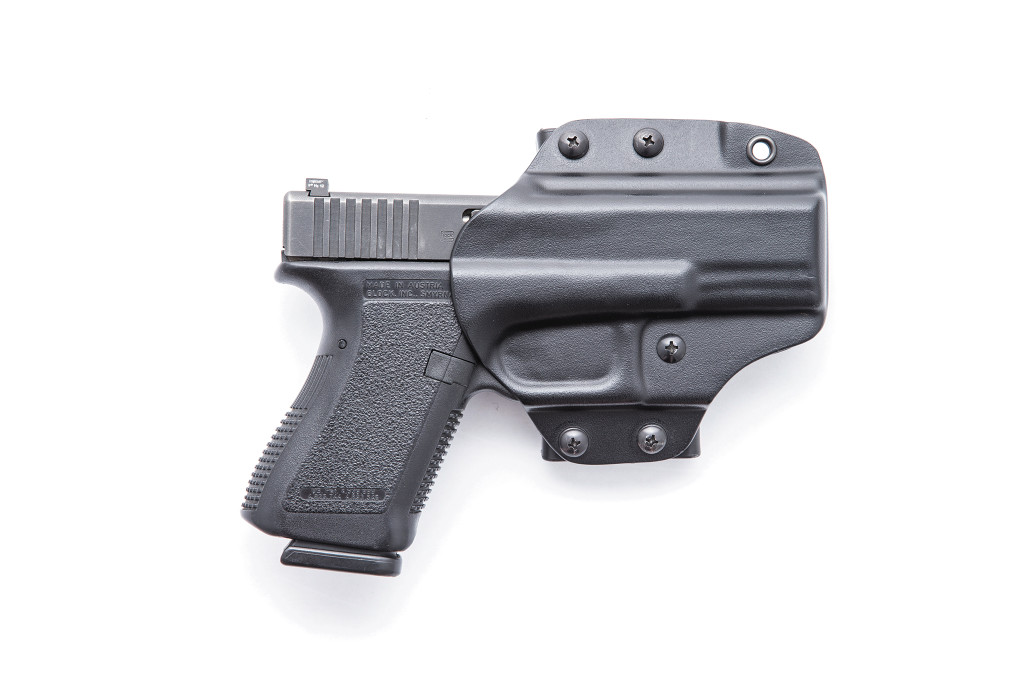
There are some additional things to think about when buying a handgun with regard to buying a holster to carry it with you, cleaning supplies, and ammunition. In terms of ammunition, there are lots to choose from, but your store employee can help you. What they will need to know is whether you are buying ammunition for target practice or for defensive purposes. Defensive ammunition is almost always hollow point, which results in limited penetration when fired. Expect to spend $500-$750 for a new high-quality pistol, but used models including police trade-ins can be found for several hundred cheaper.
POINT!
Stickman Says:
What is the go-to handgun for my house? A 9mm Glock 19 or 17, mainly because the caliber is effective, they are easy for anyone to shoot, and the 19 is small enough to be carried with me anywhere. I keep a stockpile of training and hollow-point ammunition on hand, along with extra magazines.
Second Opinion
Kyle Lamb Says:
Handgun is a must. It is best if you can carry a model that is very prolific. I carry an M&P, but have plenty of Glocks in 9mm laying around that I believe would be the most popular overall. Basic field replacement parts are also plentiful, but you should have these before the fan gets hit with crap.
Rifles
Rifles are much higher-powered firearms than handguns. The rifle is shoulder-supported when fired and comes in many forms. Many people are familiar with the lever-action cowboy-style rifles, the bolt-action hunting rifles, and the AR-15s.
The lever- and bolt-action rifles are often used in a hunting role, but that certainly doesn't negate the ability to be effective in the role of protection. These rifles often have a scope, which allows the user to see the target better from farther away. This can be fantastic if you own a large amount of property or if you are hunting. The downside to this is these scoped firearms are typically not effective inside buildings, due to the magnification that makes it hard to see things up close.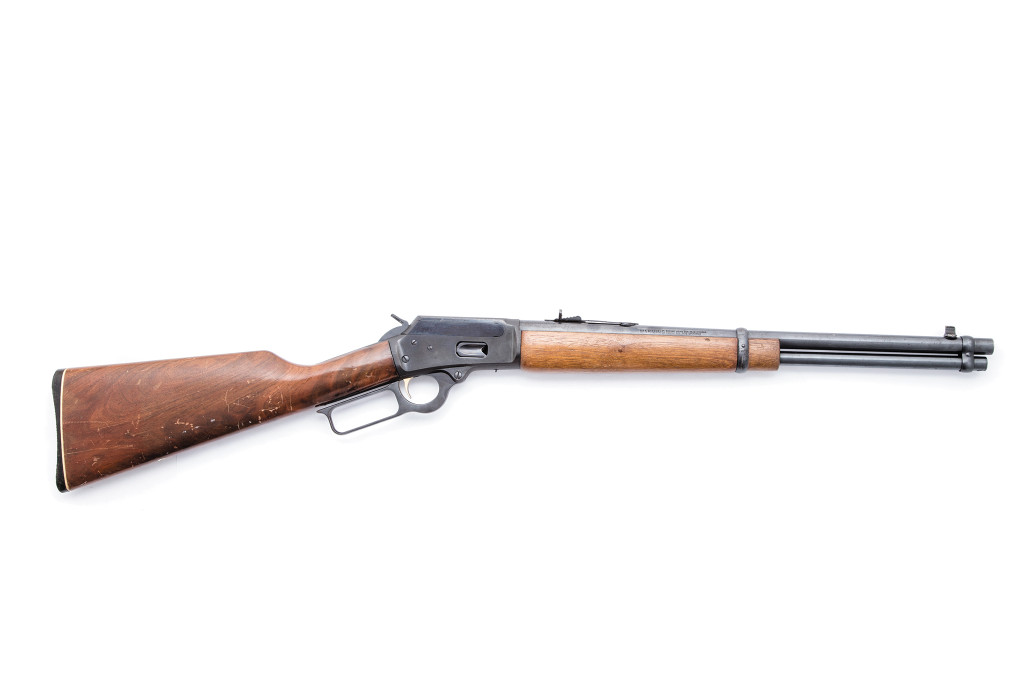
High-powered rifles are long and harder to move around with inside structures, and the ammunition will often run a high risk of over-penetration inside buildings. Do I own these types of guns? Yes, I own bolt- and lever-action rifles. Would I rely on them for protection inside my house? No. I bought my last used lever-action rifle a few years back for $150, and that was without a scope. A high-quality bolt-action rifle can easily cost more than $1,000 when you add in the cost of a scope.
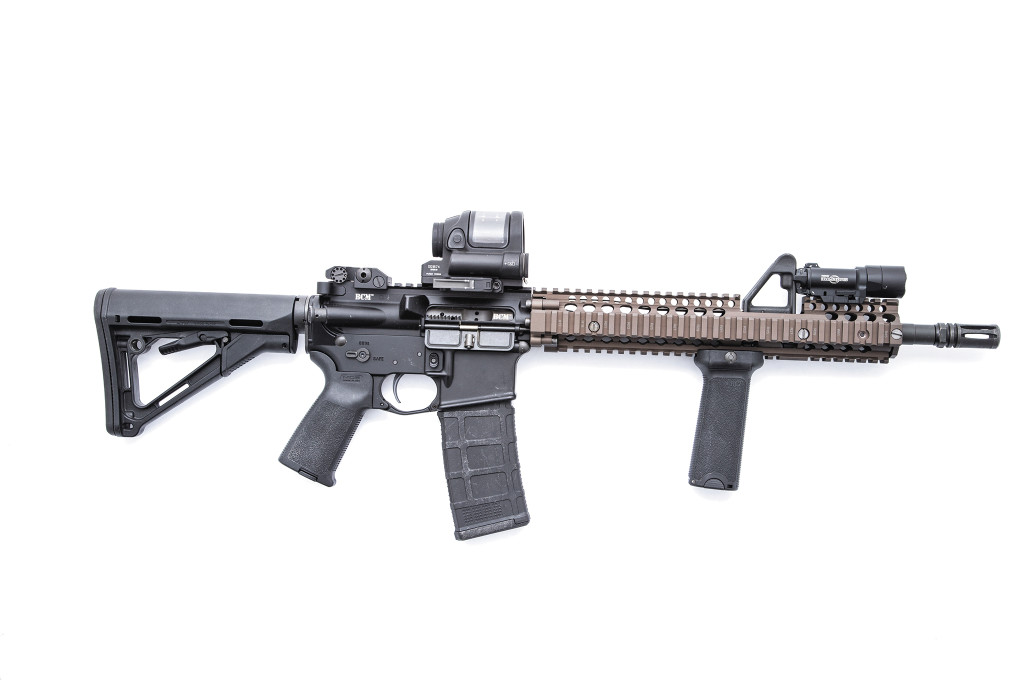
AR-15s are one of the most popular and common rifles around. They are available with a fixed or adjustable stock, accept a wide variety of optics, and can be found with different barrel lengths from 7 to 26 inches. The most common barrel length is 16 inches and can be found in the patrol cars of many police agencies across the nation. The .223 Remington, 5.56mm caliber it most commonly fires makes for a lightweight firearm with low recoil, long range, and interchangeable magazines, and it is easy to use. The AR-15 is compact enough to be highly functional inside a residence or structure, and over-penetration is not as much of an issue with defensive ammunition. Good AR-15s tend to cost in the $950-and-up price range, and the accessories can double or even triple that.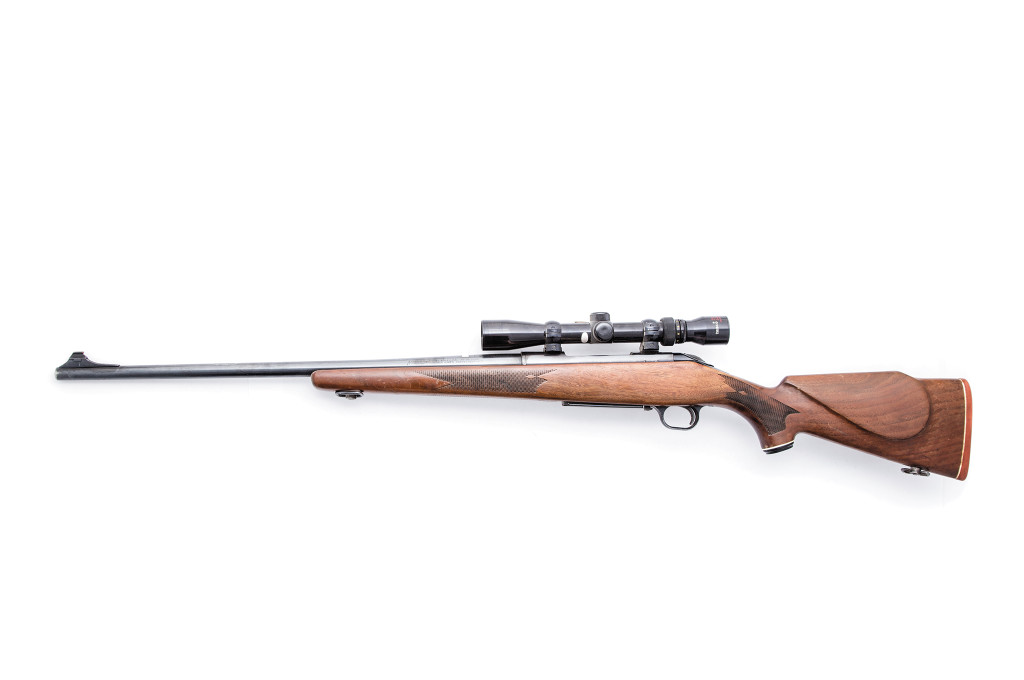
Additional things to think about when buying a rifle are a cleaning kit, ammunition, and whatever accessories you think you might need. The first accessories I would look at would be additional magazines and a good flashlight that attaches to the rifle.
POINT!
Stickman Says:
What is the go-to rifle for my house? An AR-15 with an attached flashlight. I consider this my primary weapon, if needed in the event of an urban disaster.
Second Opinion
Kyle Lamb Says:
AR15/M4 variant without model-specific parts. My favorite weapon to use is the AR15/M4 type system. Plenty of capacity and works well for hunting … whatever your quarry may be. As with the Glock, plenty of spare parts are a must, focusing on the bolt, gas rings, extractor, and extractor springs.
Shotguns
The strength of the shotgun is its unique versatility. It is able to accept ammunition that fires heavy slugs, buckshot (large pellets), birdshot (small pellets), and a variety of sizes in between. Specialty ammunition can be found such as signal flares, along with more exotic things like beanbag rounds or rubber bullets, which are typically available only to police and military units. Shotguns come in a variety of styles, including pump-action, break-action, and autoloaders.
Most shotguns hold between five and seven rounds, which is certainly on the low side, compared to pistols and the AR-15. Break-action shotguns open the way the name suggests; they break open by way of a hinge in the middle. Double- and single-barrel break-action shotguns only hold one or two rounds each, which is certainly a detriment in many, if not most, cases.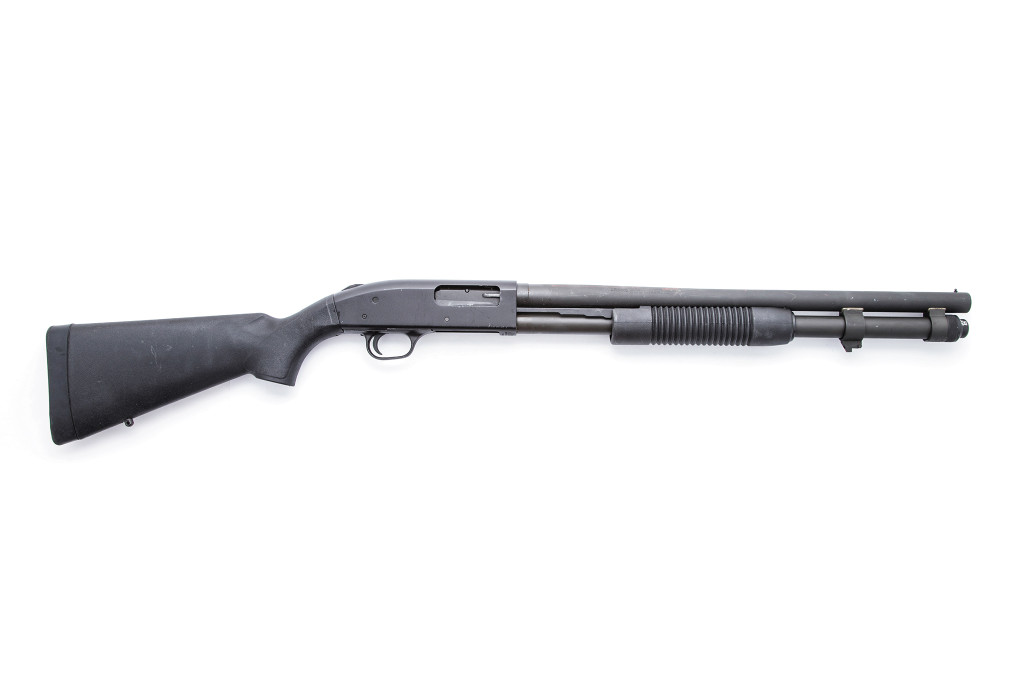
What shotguns do have going for them is a good amount of stopping power, if used with the appropriate ammunition, and for defensive purposes that means OO-buck (pronounced double-ought-buck) shot. Double-ought-buck shot consists of nine .32 caliber lead balls packed into the shotgun shell.
Pump-action shotguns are what rode in patrol cars for decades, and the familiar pump-action sound has been in many movies. One of the best things about pump-action shotguns is they are available for a pretty low cost. While there are many upper-end shotguns, the basic defensive shotguns in 12- and 20-gauge can be found for $350, often less when on sale or found used.
The difference between 12- and 20-gauge is the size, with 12-gauge being the most popular as well as the larger of the two. Last in the list is the semi-auto shotgun. This shotgun lets you fire as fast as you can pull the trigger. But, remember you are only doing this for five to seven rounds.
Additional things to remember when looking to buy a shotgun are that you do your homework and find whether you would be better served with a 12- or 20-gauge. Find the right model, so you aren't swinging a super-long goose-hunting gun down your halls and banging into walls. Also, you'll need to find a good cleaning kit and the right ammo.
Don't buy into the shotgun hype that it is the best defensive weapon available, because the rounds tend to over-penetrate and, since you are firing nine .32 caliber pellets, you have a lot of lead in the air that may miss and go through walls. The shotgun is still a fearsome weapon, but make sure you know its limitations.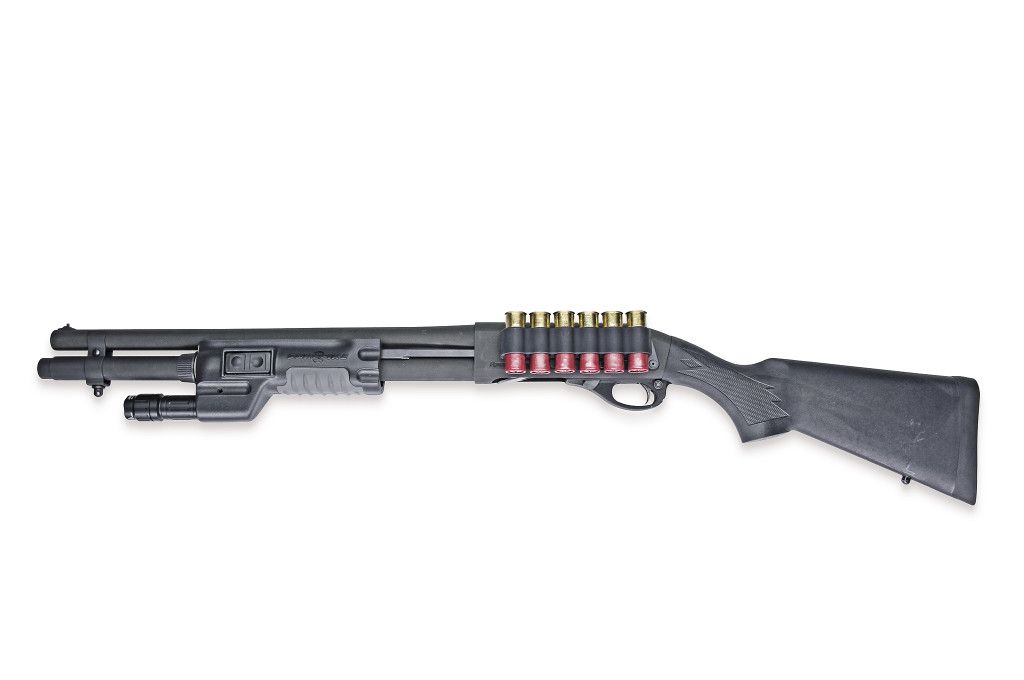
POINT!
Stickman Says:
Do I have a go-to shotgun? Yes, I have a Mossberg 590A1 pump-action, as well as some others, but they aren't my first or second choice in a crap-hits-the-fan scenario.
Second Opinion
Kyle Lamb Says:
Remington 870 or Mossberg 500 both will work fine and should not require much maintenance. Ammo selection should be plentiful and can aid in hunting small and big game or for protection.
Size & Weight
Size and weight should be deciding factors of which type of firearm you choose, as well. Handguns are small and can be carried more easily when compared to long arms such as rifles and shotguns. Handguns tend to be more difficult to shoot accurately at range, however.
With both the rifle and shotgun, something to consider are their portability, size, and weight. If you find yourself in a full-on breakdown of society and need to move from one place to another, especially on foot, a long arm may draw unwanted attention to yourself. While they do provide a good deal of standoff protection, they can also make you look like a threat if handled out in the open. This is just another factor to think about when choosing a firearm with urban disaster as the subcontext.
Training
After you select a gun, your next step is to get some training. Your local gun store is usually a good source to find a list of qualified instructors. Talk with the employees and find out how long an instructor has been teaching and what their credentials are. Also, find out how long the instructor has been interacting with the gun store. Good firearm instructors have more than combat time and good stories; they have the ability to interact and teach in a professional manner.
You want someone to be able to show you the safe handling, loading and unloading your firearm, the fundamentals of marksmanship, cleaning and care, and other basics when you are starting out.
Are you looking at a firearm or firearms for family protection? If so, consider having your family participate in a basic firearm course with you. All of the courses in the world won't help you any if you are at work and your significant other has someone breaking in the house.
About The Authors
Stickman's experience as a team leader in the law enforcement and military fields allows him to have a high level of expertise and understanding of firearms usage in defensive roles. He is an active-duty police officer with over 20 years experience. Stickman is also a military veteran of eight years, firearm instructor, and armorer of a variety of handgun and long gun platforms.
Kyle Lamb retired as a Sergeant Major after 20-plus years in the U.S. Army, 18 of them in the Special Forces. He's been deployed to all parts of the world including Iraq, Bosnia, and Somalia. Lamb has experienced some serious action and brings those experiences with him to his training and firearms accessories company, Viking Tactics (http://www.vikingtactics.com).

